
After providing a look at the history of flat track racing in America, it only seemed fair to spend some time with today’s top-spec machinery. I had initially planned the feature on this pair of American Flat Track SuperTwin prototypes to coincide with AFT’s season opener at Daytona International Raceway last weekend, but with the event postponed, that plan was shot.
But with more and more folks now sitting at home glued to the internet, I thought it would be best to go ahead and roll out this look at the Harley-Davidson XG750R and Indian Motorcycles’ FTR750 flat track prototypes. It’s also worth pointing out that while there are a pair of riders making use of the Yamaha MT-07 DT, the lion’s share of teams are on one of the two aforementioned American motorcycles.
Before I dive into the each of the bikes at hand here, it’s necessary to flip through the history books a bit. I touched on this in my previous flat track piece linked above, but the Harley/Indian rivalry predates World War II.
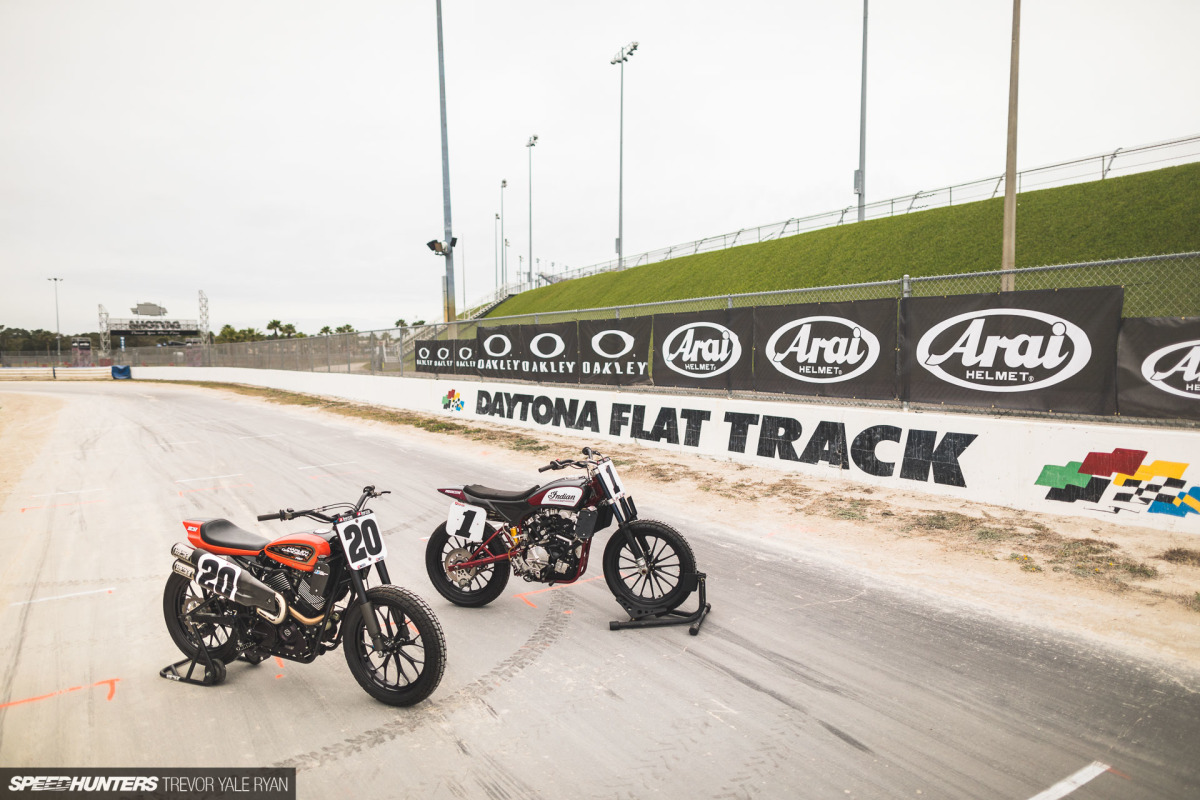
In 1932, the American Motorcycle Association sanctioned a ‘Class A’ dirt track championship that was set up to run prototype machinery. Running up to WWII the rivalry between these two manufacturers heated up, only to culminate in the years following the war.
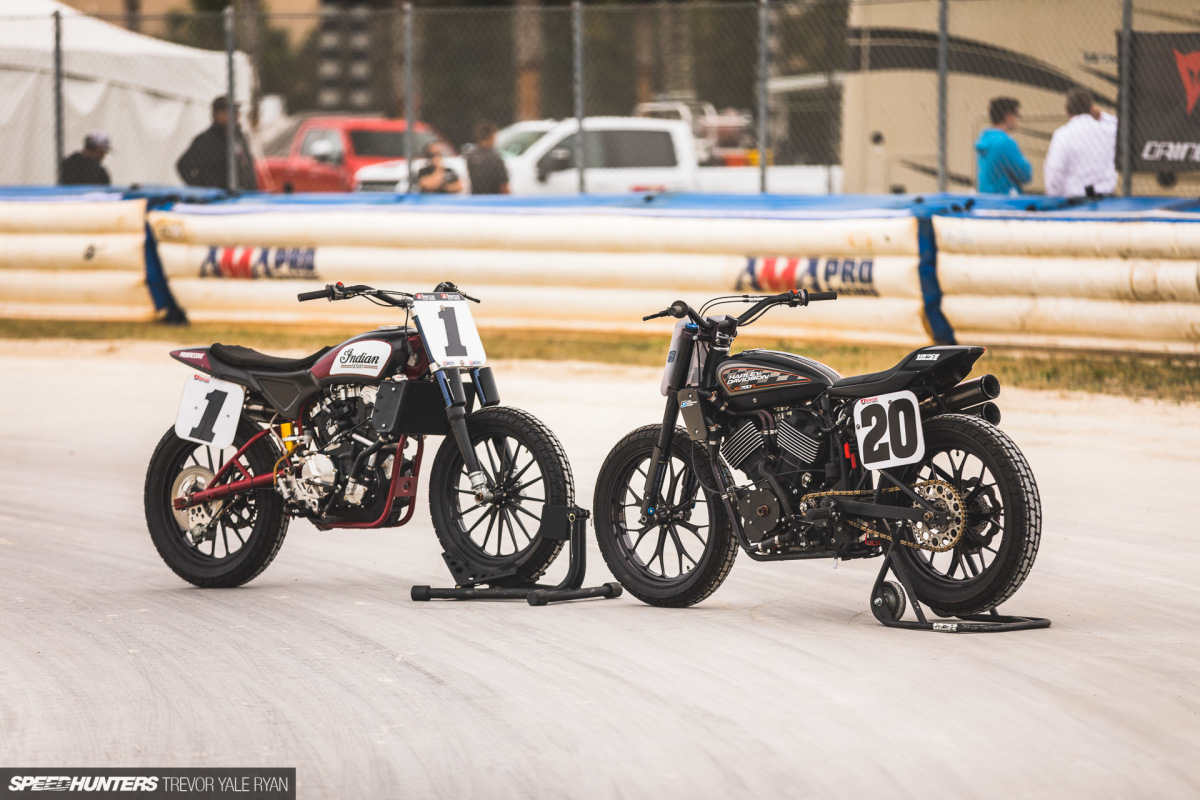
In the early ’50s, Indian swapped championships with H-D, with each team going on a solid run for a few years at a time. Fast-forward to the modern era following Indian Motorcycles’ restructuring with Polaris, and Indian has taken the championship the previous three seasons. It’s just amazing to me that today, 70 years later, the same two manufacturers are back on top in the current prototype class.
Prior to Indian’s recent championships, a rider on a Harley-Davidson motorcycle had placed first in the twins class (or equivalent) every single year since 1988 — not to mention many times before that. While that’s an impressive feat, it’s always great to see manufacturers butting heads in a championship as everyone — well, the fans at least — come out ahead. Racing is simply more exciting when you can identify with the series beyond a specific rider/driver or two; this is where the manufacturers come in.
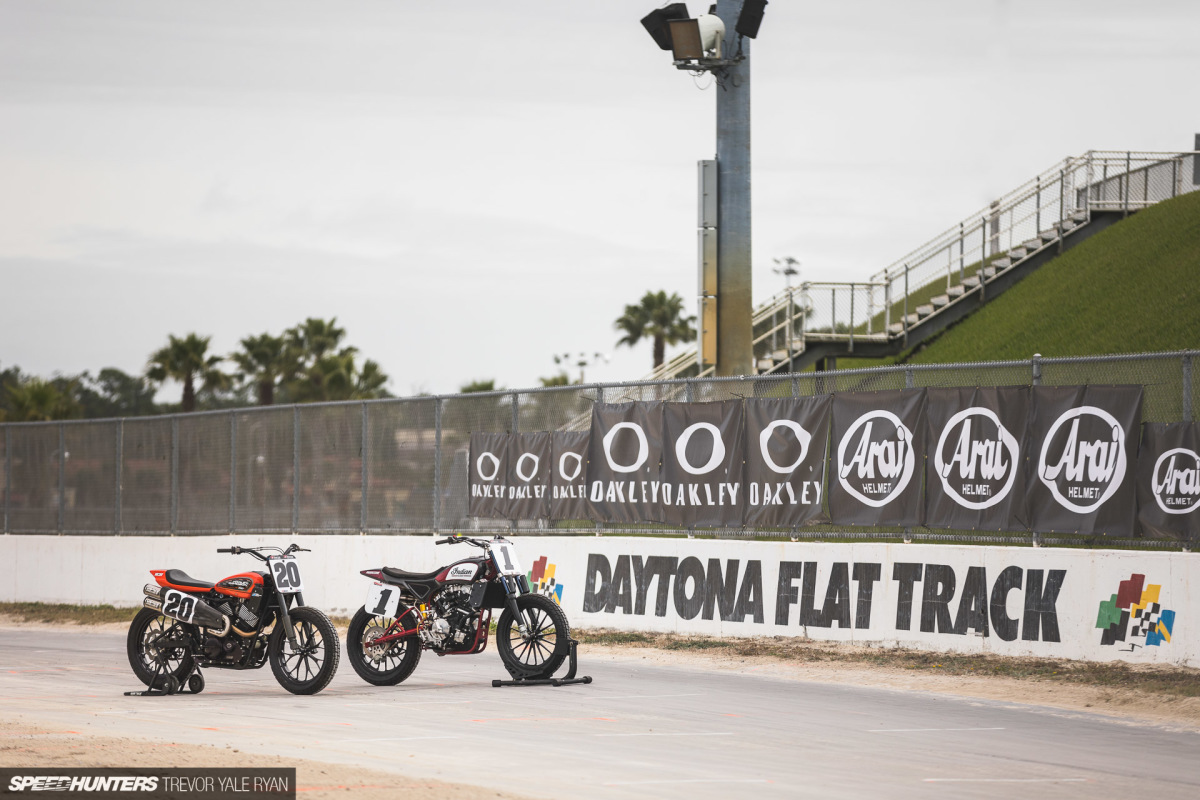
Helping to further fuel the clan-based mentality, the bikes in the AFT Twin Championship look a lot like their road-going counterparts that are coming back into fashion. With both brands already having a massive religion-like following here in the States, the upcoming AFT season is just one more reason to gather around the BBQ with your motorcycle-riding buddies on the weekend.
And if you aren’t of the two-wheeled variety yourself, here’s to hoping this bit sheds some light on something new for you.
CHAPTER TWO
The Indian Motorcycles FTR 750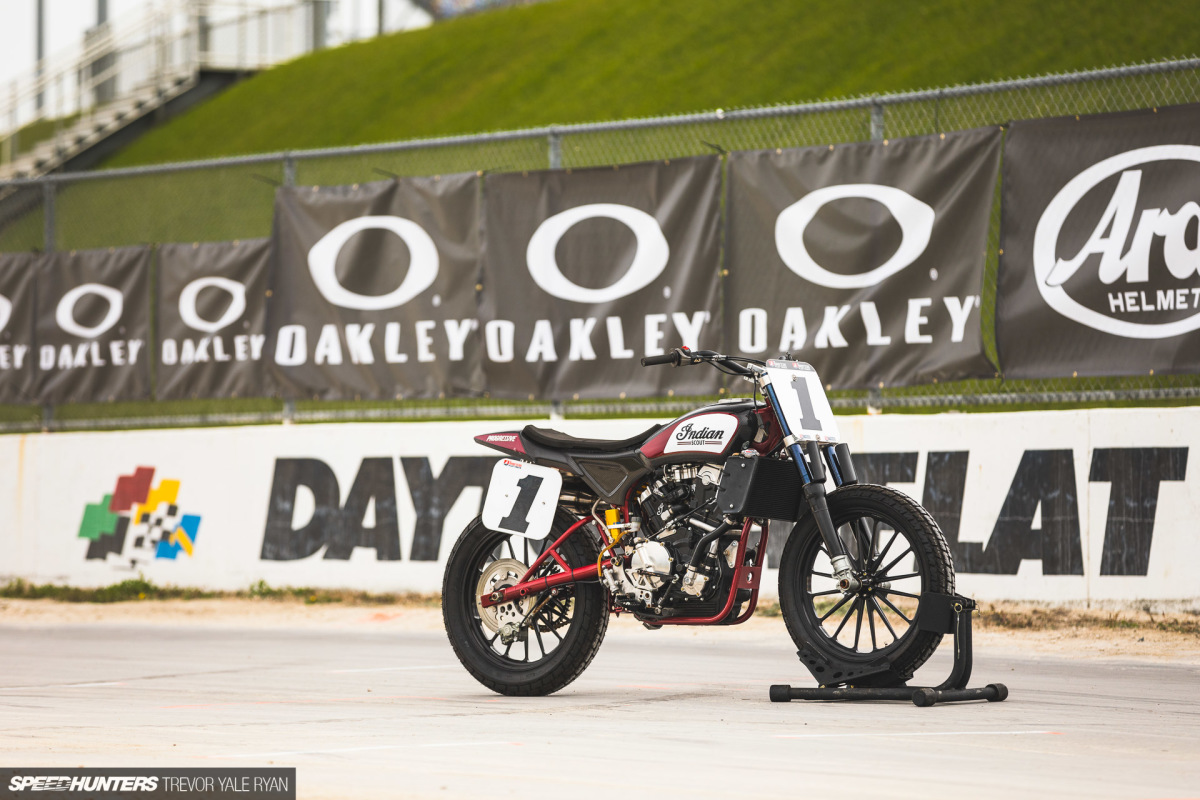
First up, a gallery of details from the Indian Motorcycles Scout FTR 750, and then I’ll bite into the meat of this thing. Plus, a road-going option if you’re looking to add some excitement to your life.
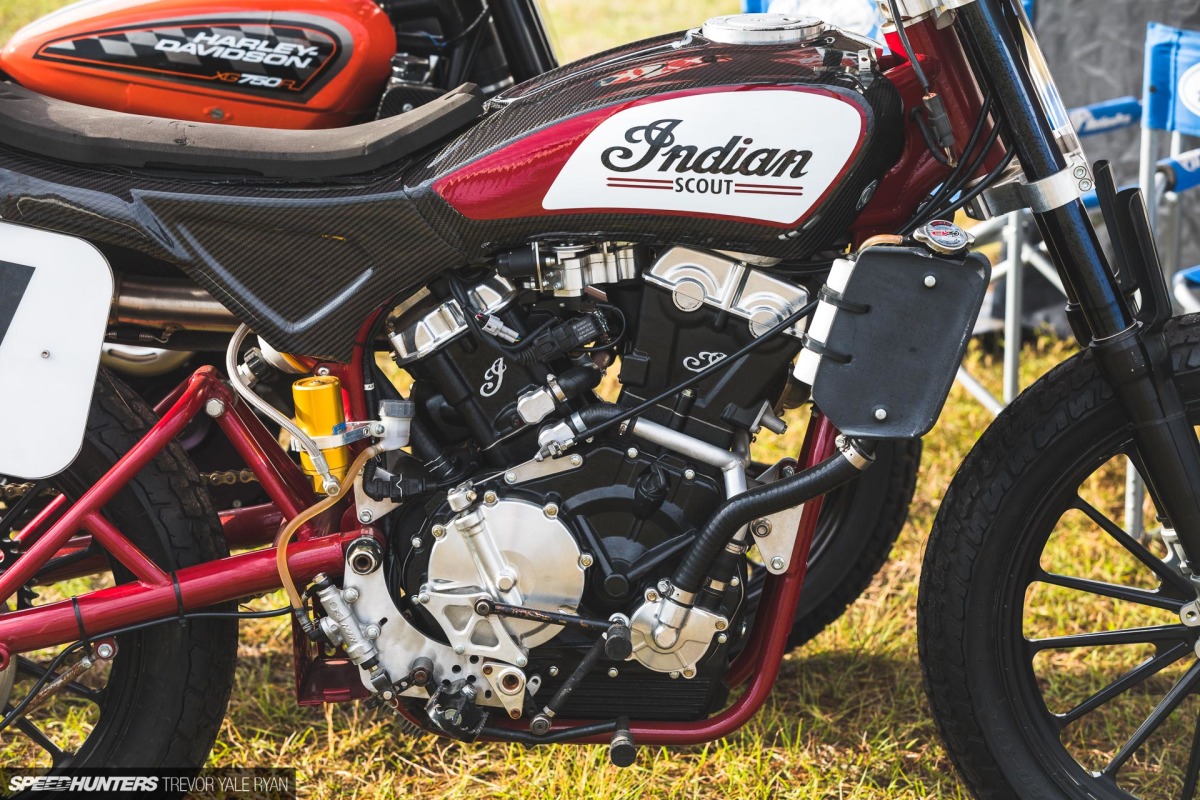

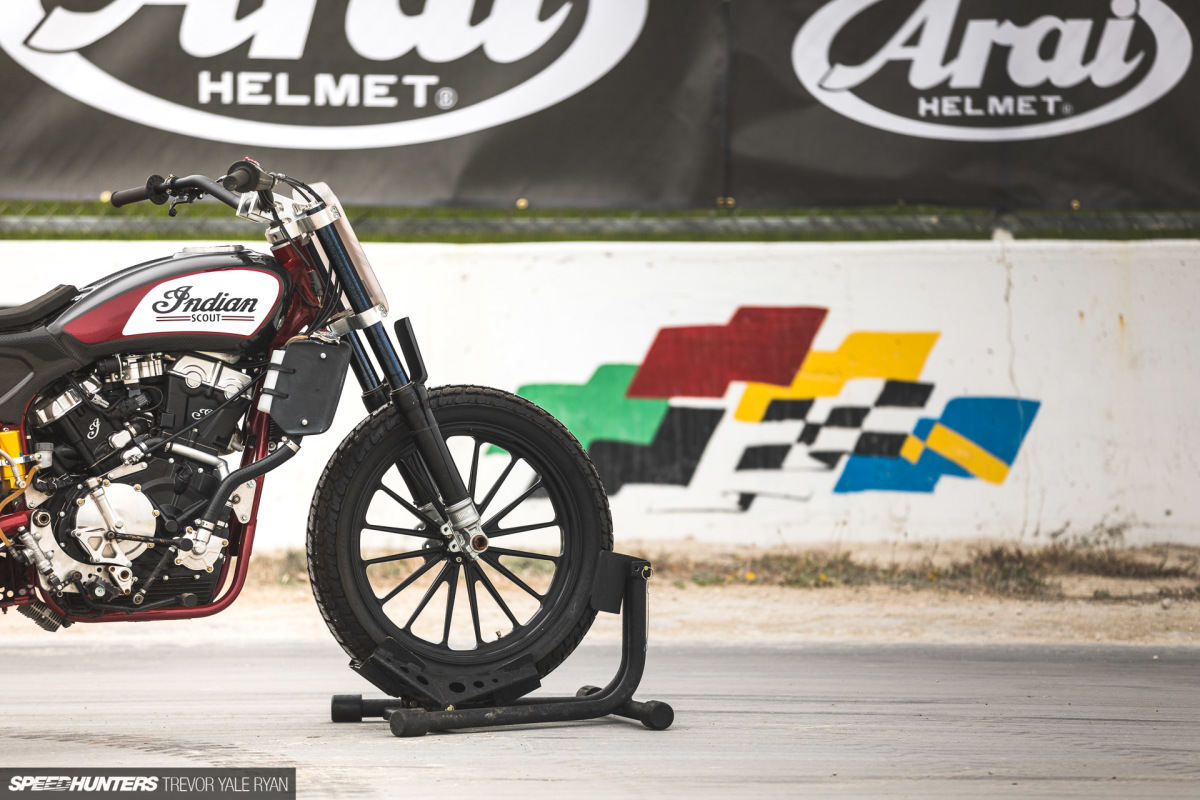
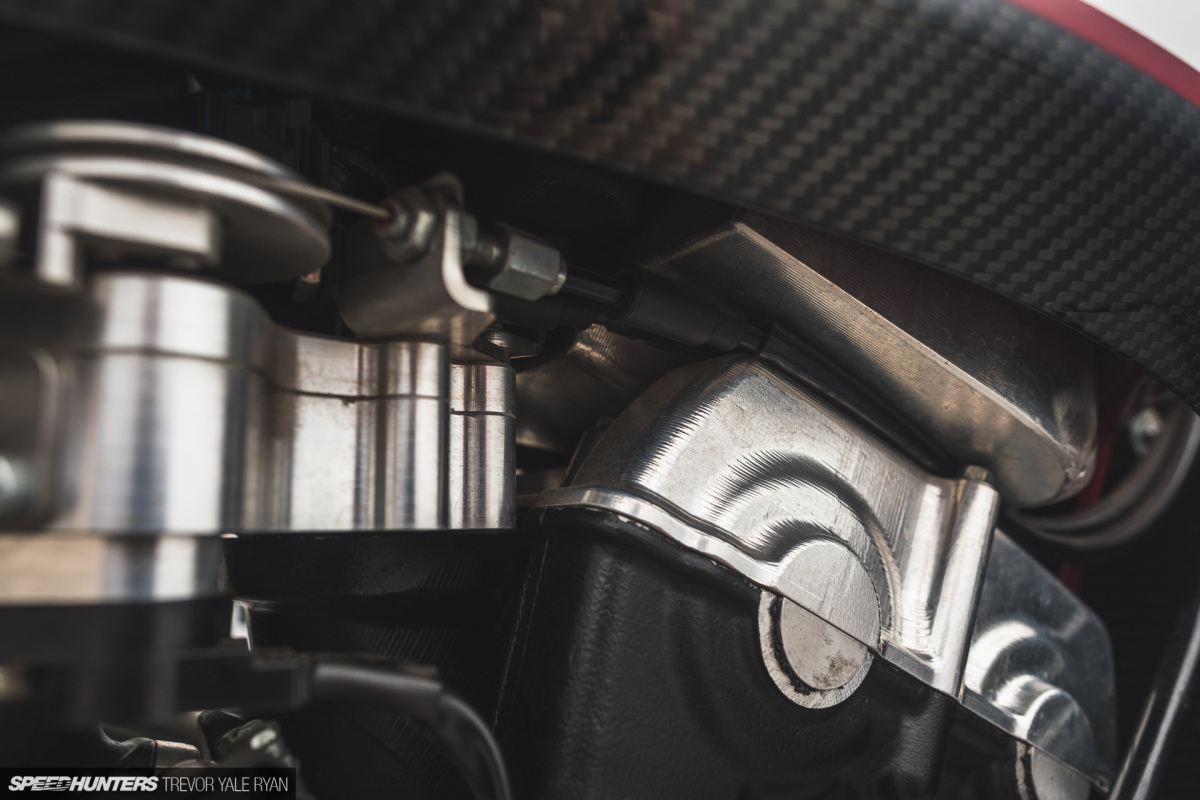
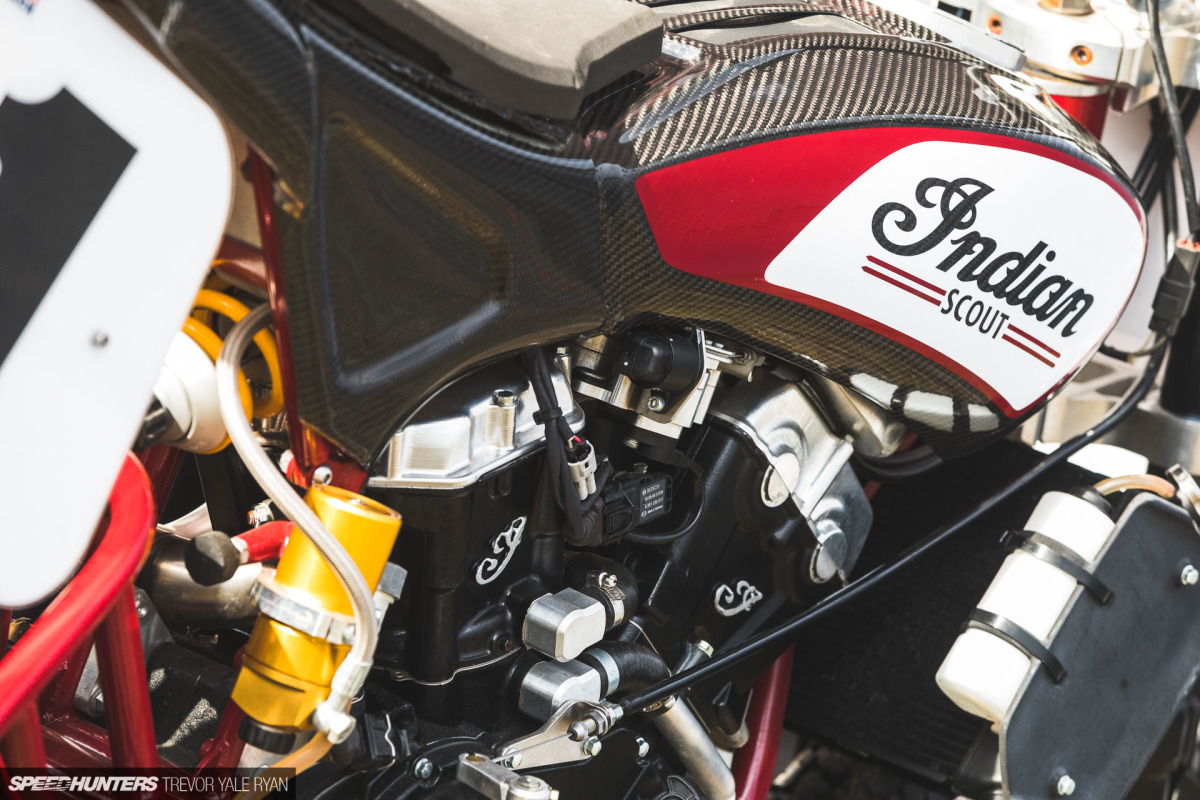
As you can see in the photos above, carbon fiber panels adorn an adjustable trellis frame that was engineered specifically for power transfer on a dirt flat track. Nearly every feature of the bike can be tweaked to fit the rider’s preferences, and this of course applies to the race-tuned Öhlins suspension which consists of a conventional front setup and a mono-shock in the rear. You’ve likely also noticed there are no front brakes to be seen, and this particular example relies on a Brembo rear unit to provide stopping power and shift the balance of the bike around the track.
Saving the best for last, let’s take a look at the 53-degree V-twin. Under each scripted ‘I’ on the twin cylinders lives an 88mm piston that careens back and forth along a 61.5mm stoke. Some quick maths tells me that the engine displaces a hair over 748cc with those specs, just under the 750cc designation in the SuperTwins class (although a competitor memorandum suggests that teams are free to increase displacement up to 900cc). I loved getting up close and having a look at the machined grooves in the cylinder heads, each of which houses two camshafts that release fumes through an S&S Cycle exhaust system.
The incredible thing about this race engine is that it’s manufactured with reliable and simple technology you would find on the road, such as chain-driven camshafts, oil-jet-cooled pistons, and water-cooling. The original goal when this engine was first designed was to provide a race-ready engine that could put out over 100hp at 10,000rpm, all while providing a planned service interval of 30 or so hours. Impressive, especially when paired with a bike that tips the scales around 310lbs (140kg), the minimum weight for the Twins class.
Following a duo (which is now a trio) of championships, Indian released the FTR 1200. The idea here was to create a race-inspired design based off the FTR 750 that had all of the bells and whistles required to cruise around on the streets, all while producing 120hp from its larger 1,200cc engine.
FINAL CHAPTER
The Harley-Davidson XG750R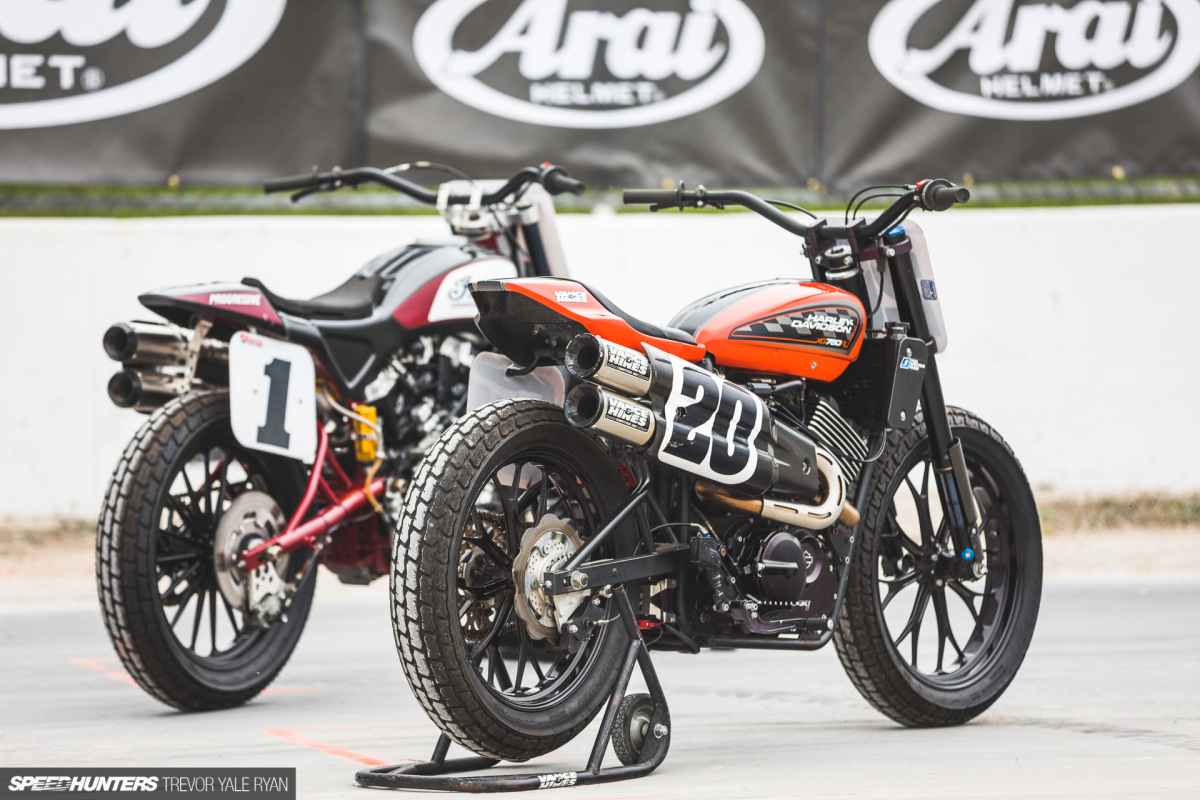
Next up, the Harley-Davidson XG750R. Again, some photos followed by the nitty-gritty that makes this similar-spec bike different from its counterpart.
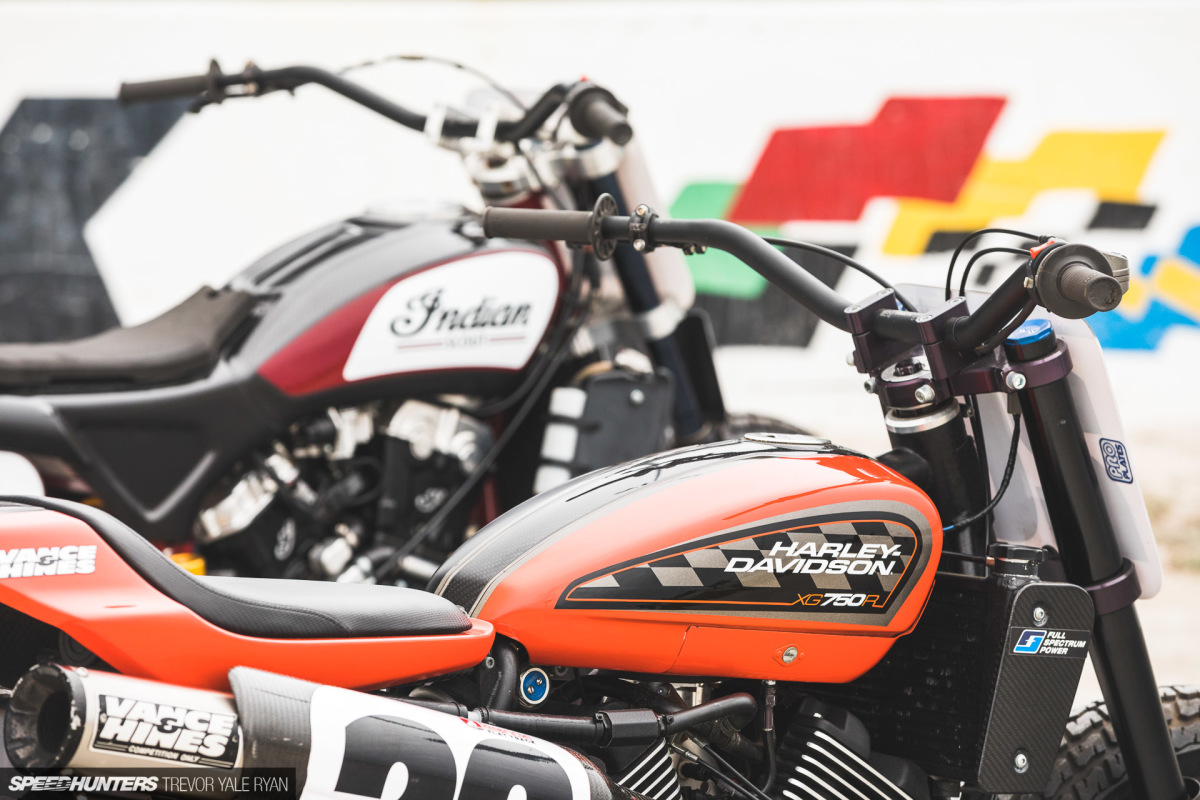
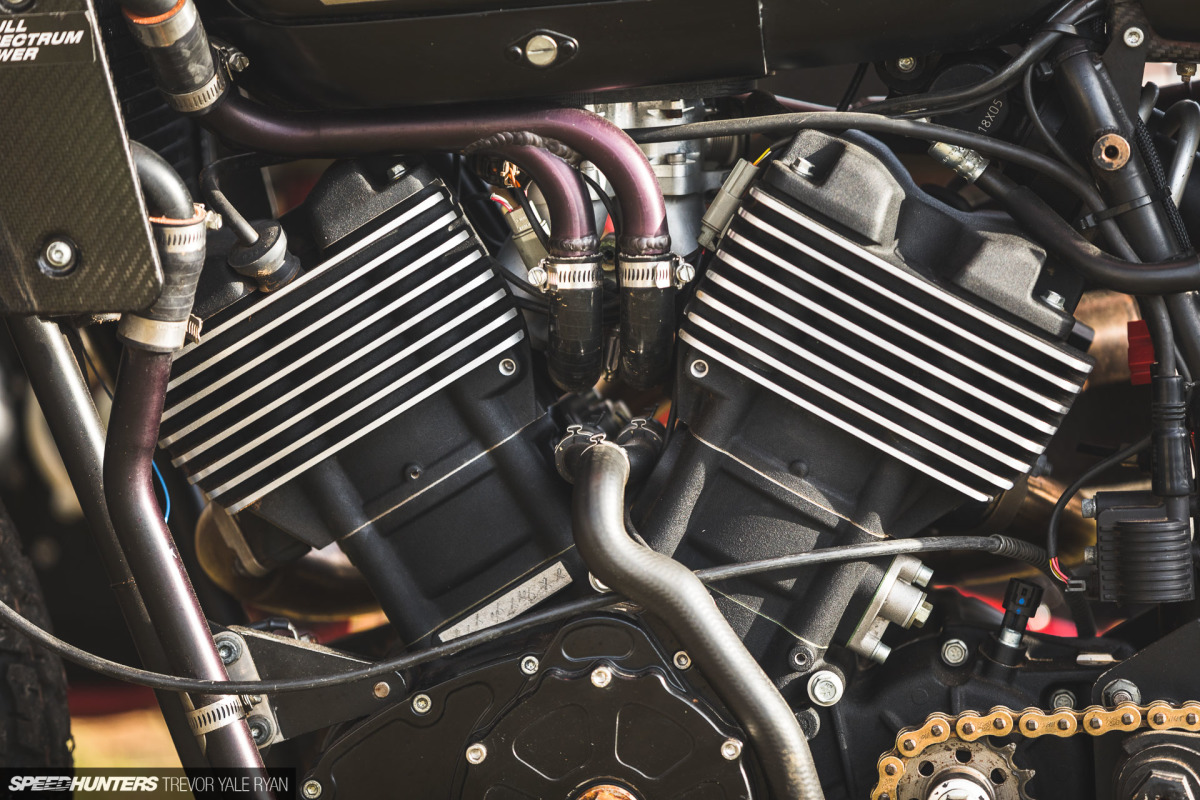
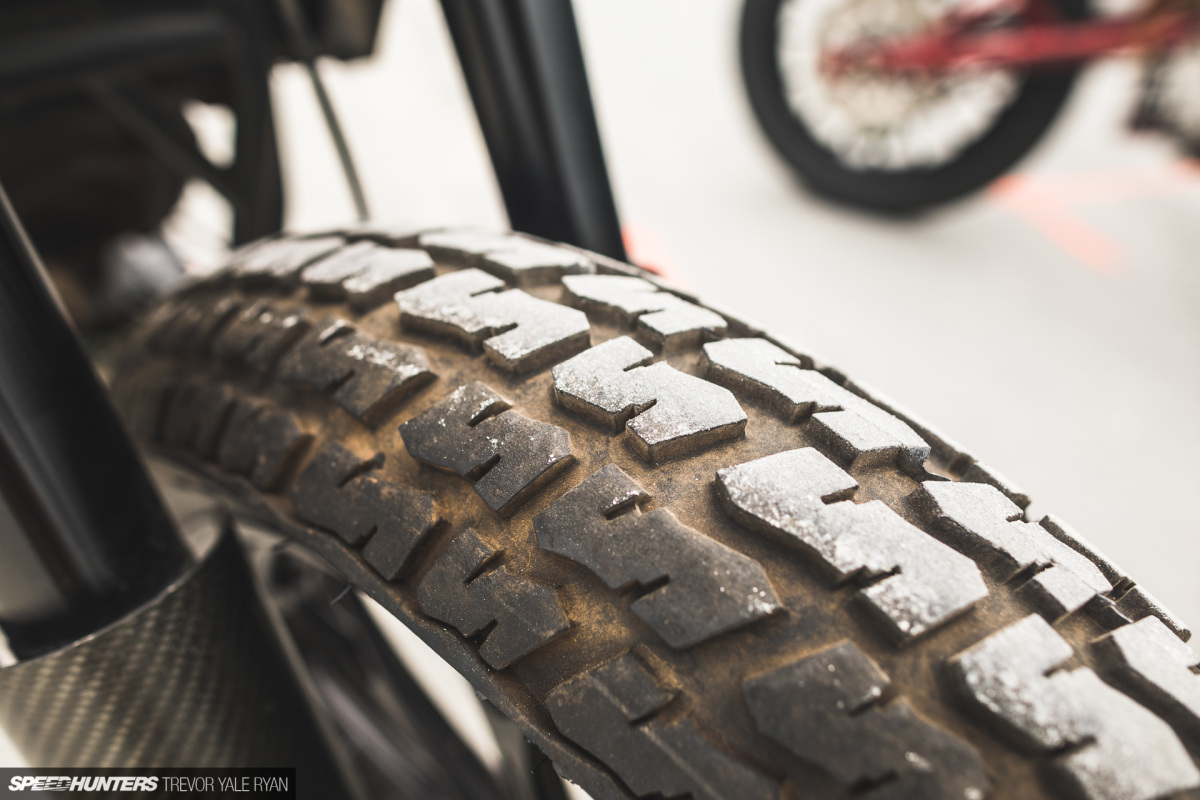
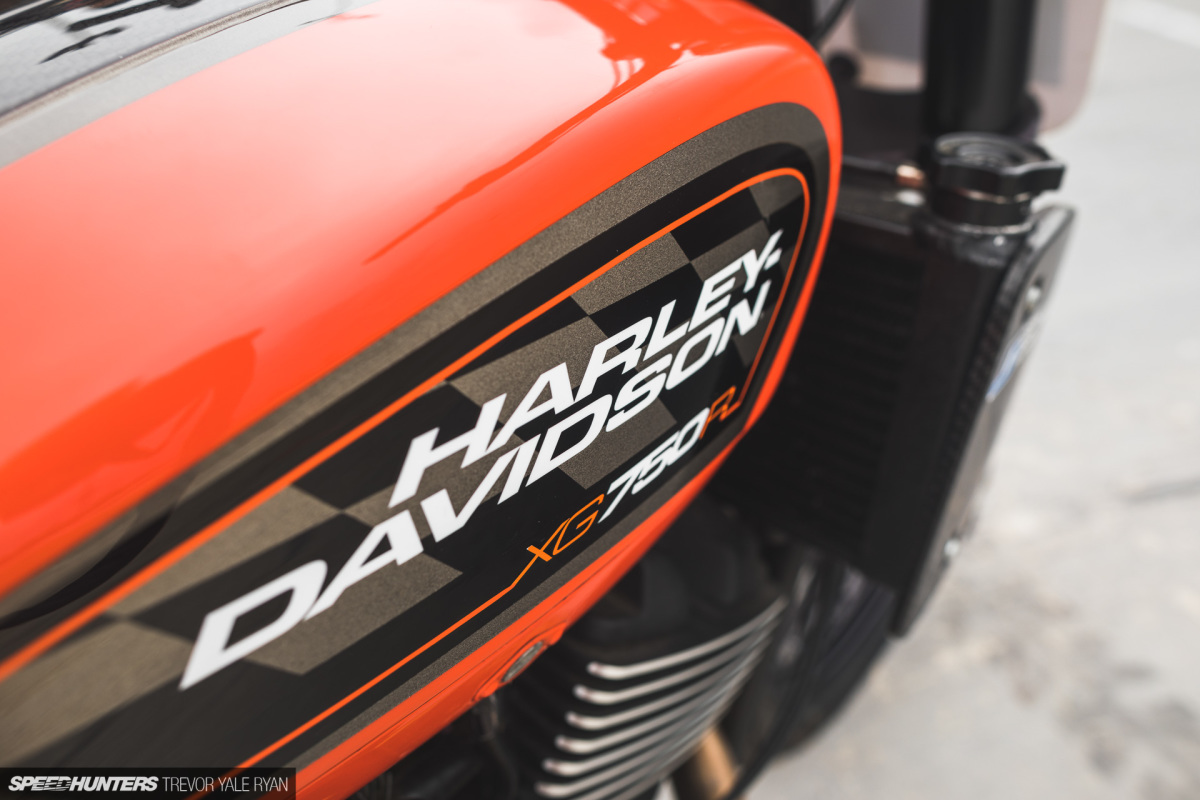
As expected, a water-cooled and fuel-injected 750cc V-Twin thumps power through a chain down to the dirt. The difference is, Harley essentially has campaigned the same aluminum XR750 design through 42 years of near-total dominance in flat track racing. In many ways the sport hasn’t changed since its early days, which is one of the aspects that makes it so appealing and accessible to so many here in the States. But with Indian’s fresh design racking up championships, Harley had to respond with a new prototype design of their own.
The engine forms a 60-degree V in this case, with an 85mm bore and a 66mm stroke as well as four valves per cylinder. Slight, but key differences in the engine result in trickle-down differences in the chassis as compared to the Indian. The interesting thing to me here, though, is that Harley themselves say that it was their ‘Street Rod’ line of bikes that inspired the new ‘XG’ flat track racer. Sort of like a homologation special, just the other way around — plus some marketing brilliance. Similarly, the engine shares technology in the road-going ‘Street’ engines with a single chain-driven camshaft overhead in each of the two cylinders.
While appearing similar to the outgoing XR flat-track design, the XG very much turns the XR on its head. The technology that is packed into the XG, simple as it may seem, very much goes against the grain of Harley’s longstanding dedication to air-cooled, overhead-valve V-twins. While it may be a disgruntling divergence to brand loyalists, this is the beauty of manufacturer competition in a race series. Rather than to continue progressing a four-decade-old design, Harley recognized that to be successful in the 2020s and beyond a fresh take was required. This is that fresh take, and all that’s left for Harley is to dethrone Indian and secure a championship with their newest design.
Since I pointed out their competitor’s road-going versions, it’s worth a mention that Harley’s Street Rod that inspired elements of this design is still available with a 750cc (well, 753cc/46ci) powerplant. Unfortunately, it seems all of the prototype XG750R chassis have been brought up to go racing, so you’re out of luck on that front.
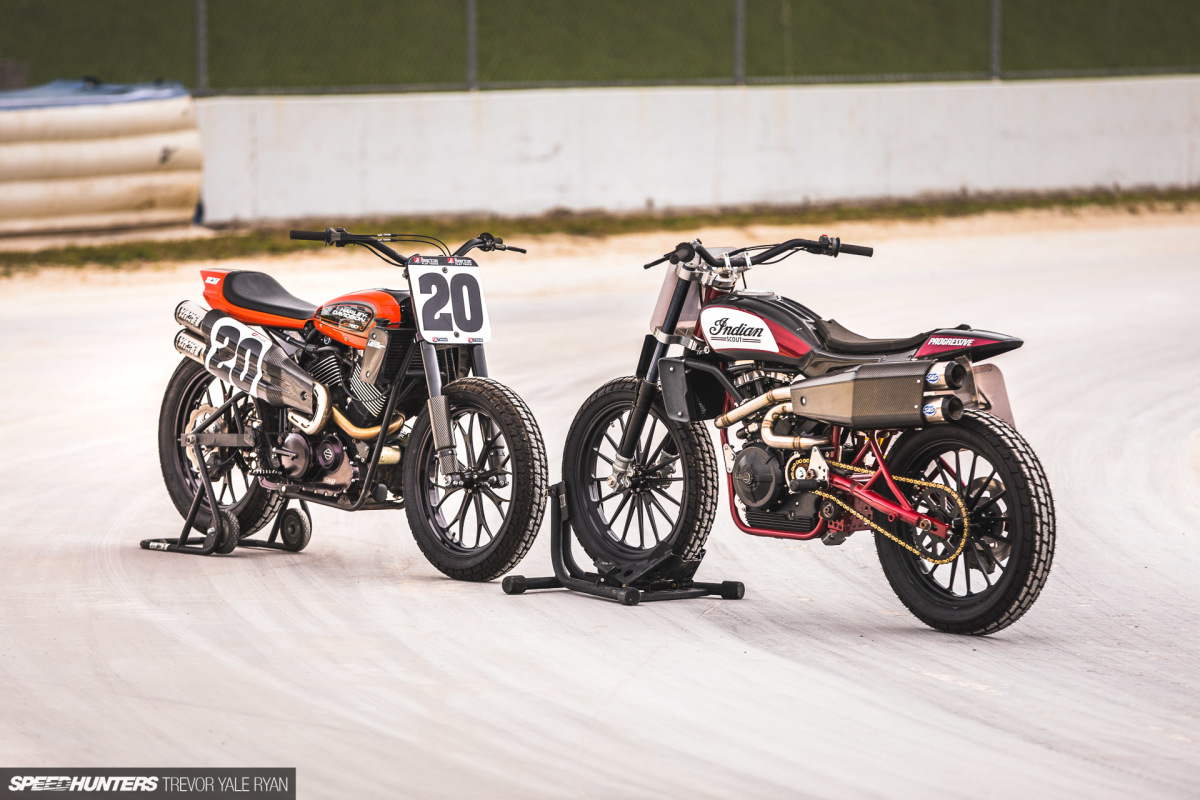
There you have it – a quick look at the giants of the American Flat Track SuperTwins prototype class. Of course, I’m barely scratching the surface here, and as with any race-prepped car or bike there are many levels deeper that I could go. For example, since all of the teams are running the same Dunlop DT4 compounds in 2020, how are builders working around this equalizer to gain an advantage?
With a pro team right around the corner in Portland, Oregon, I’m sure I could pop over and ask. Maybe I ought to — that is, once I’m allowed out of my house.
Trevor Yale Ryan
Instagram: trevornotryan

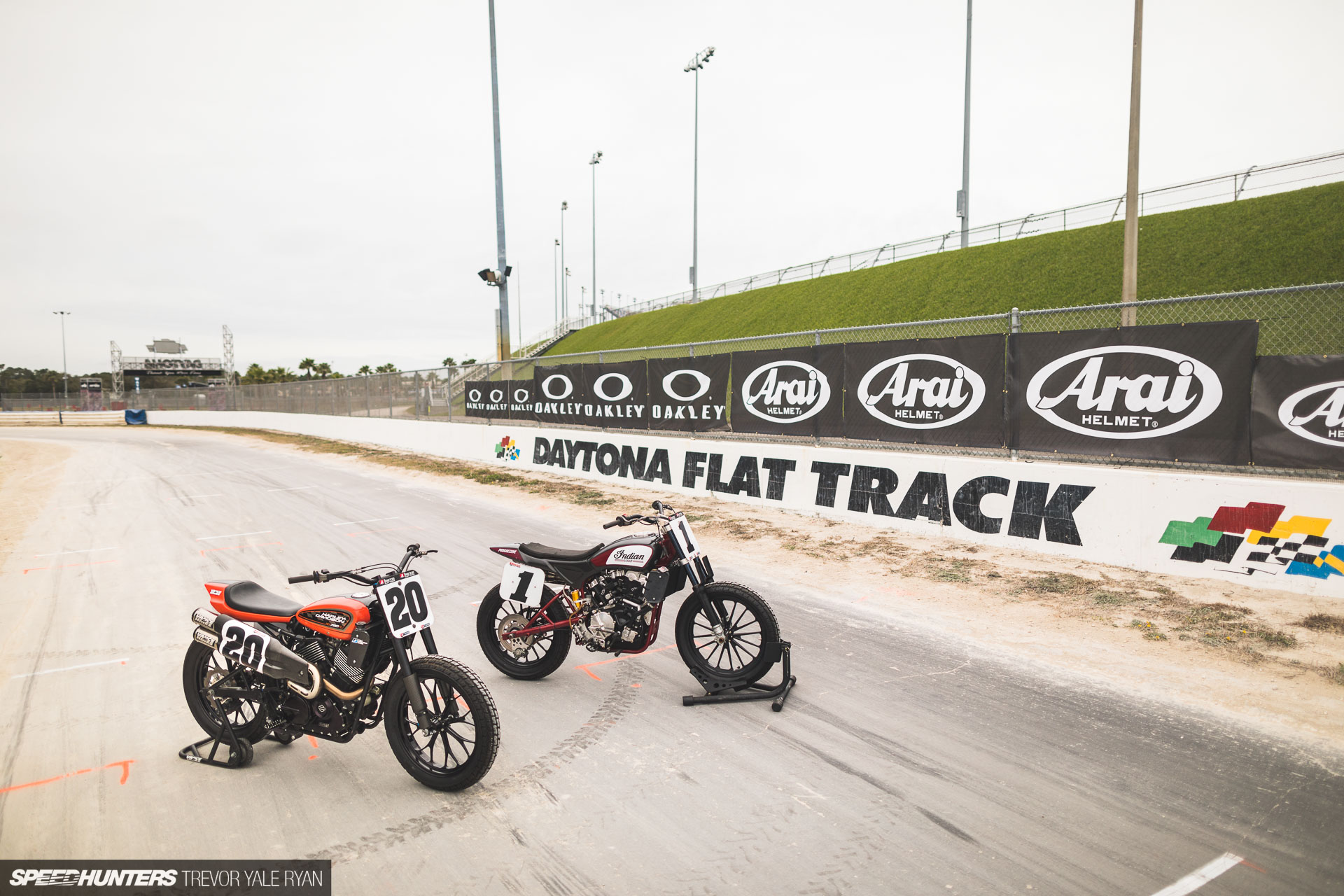

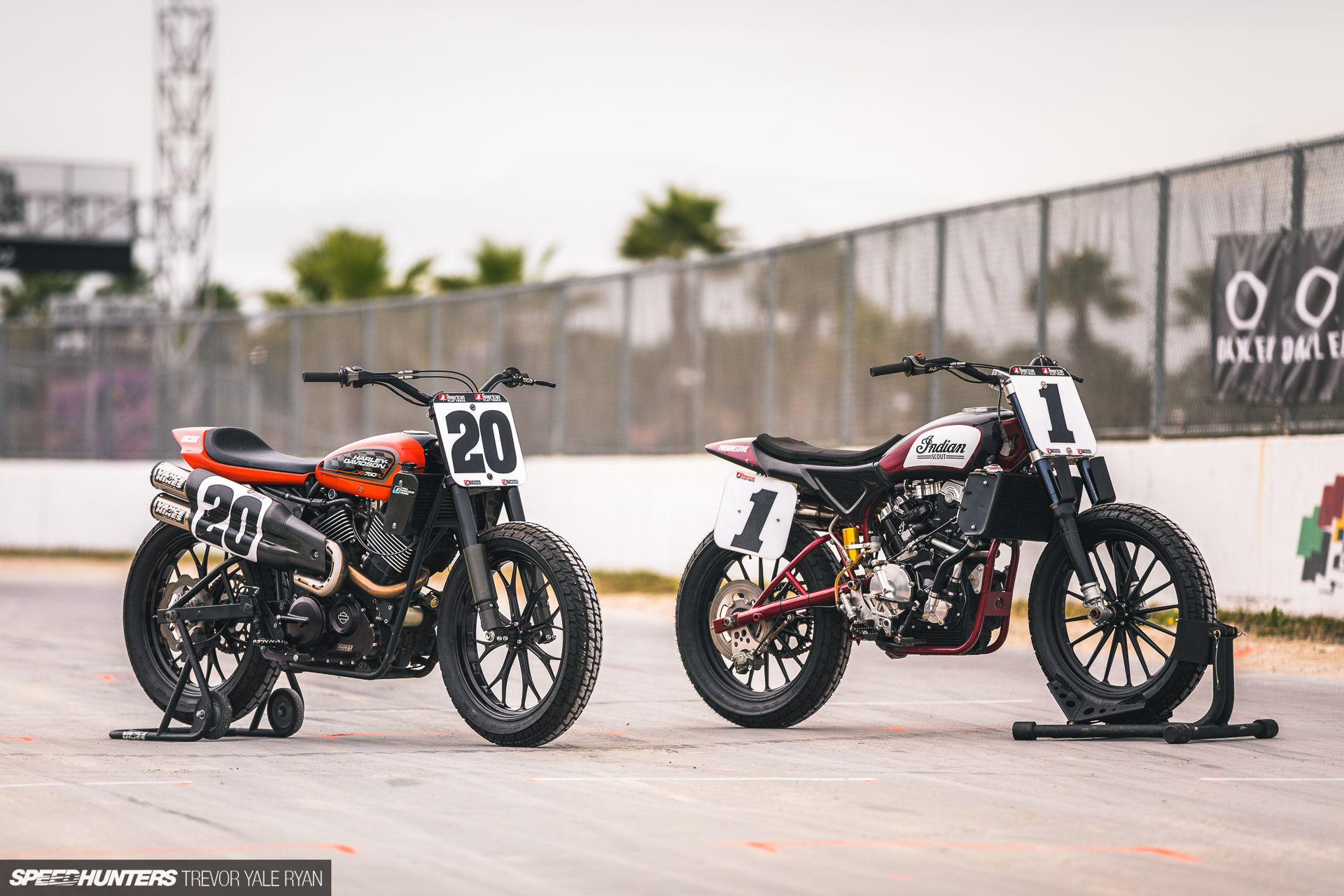







































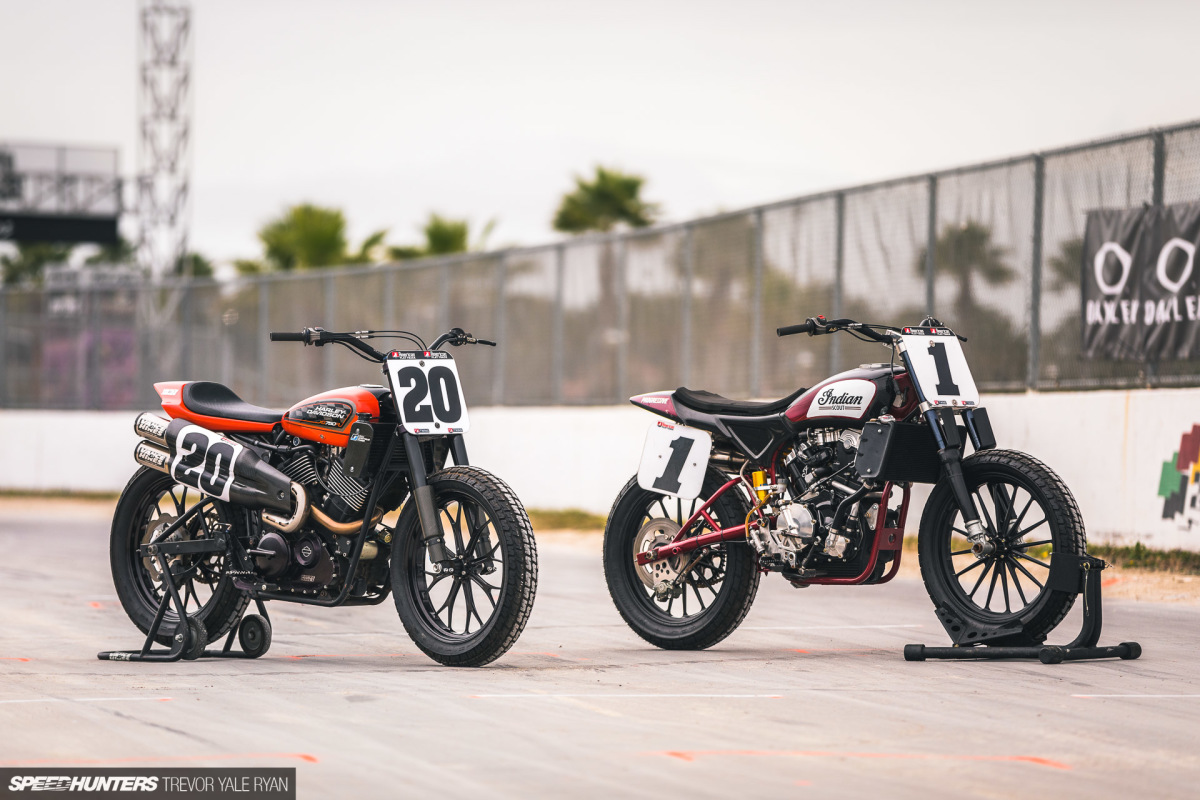
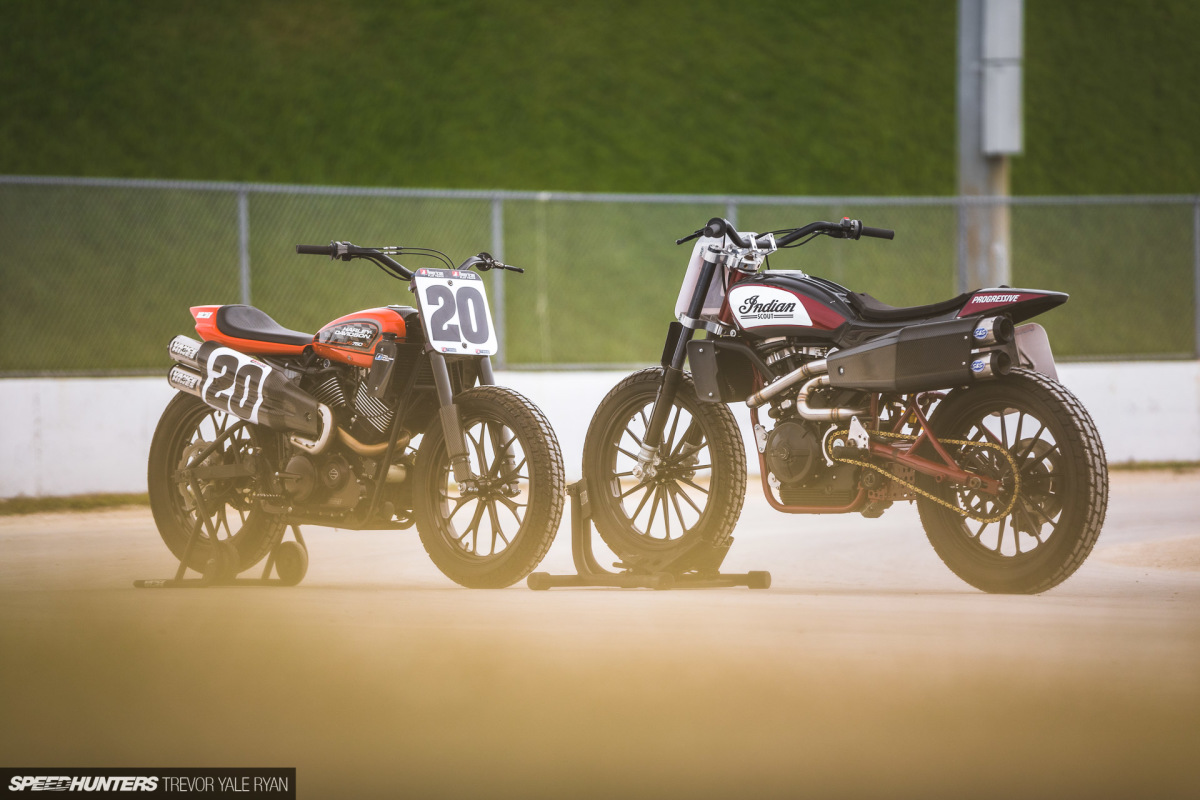
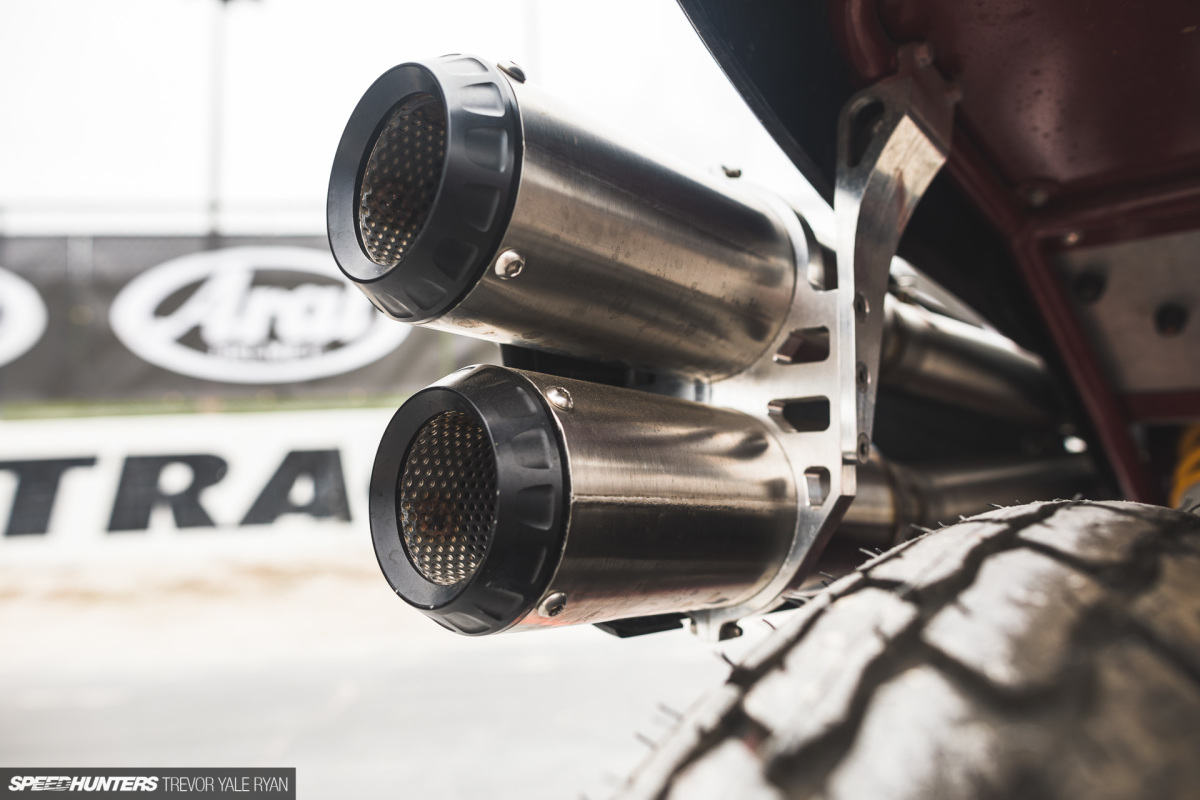
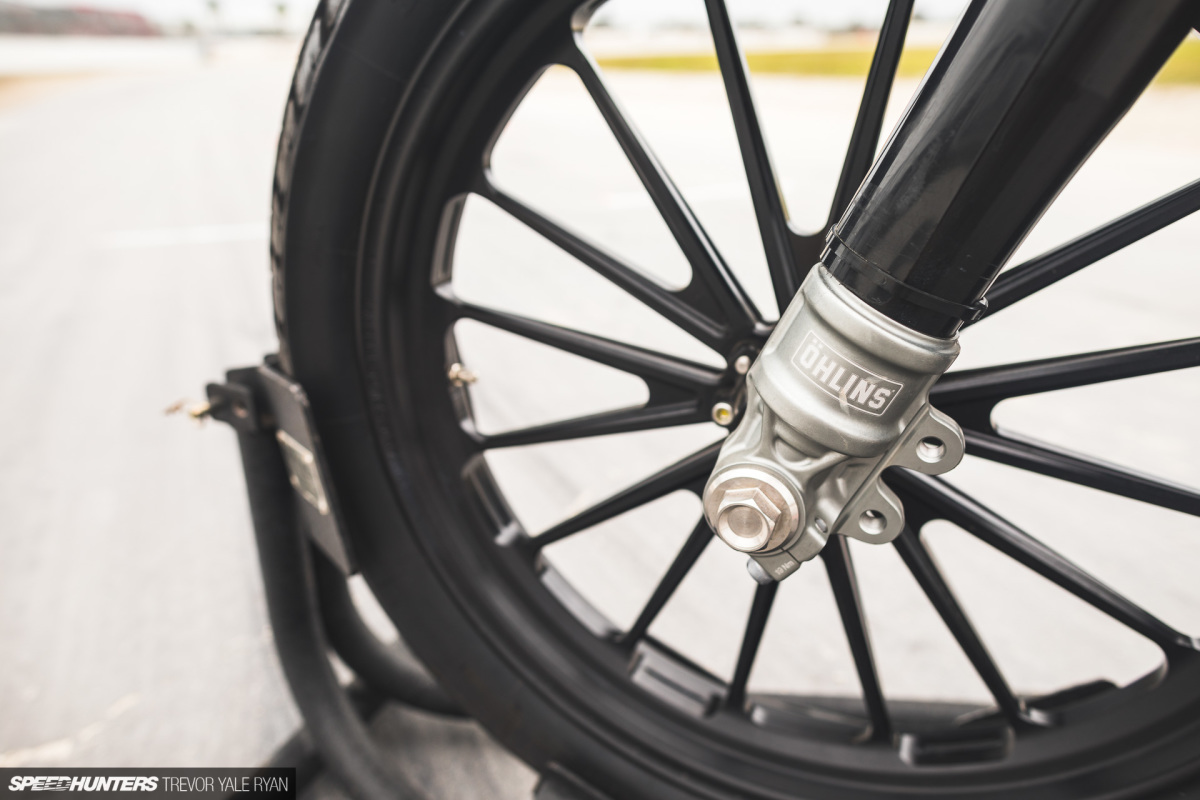
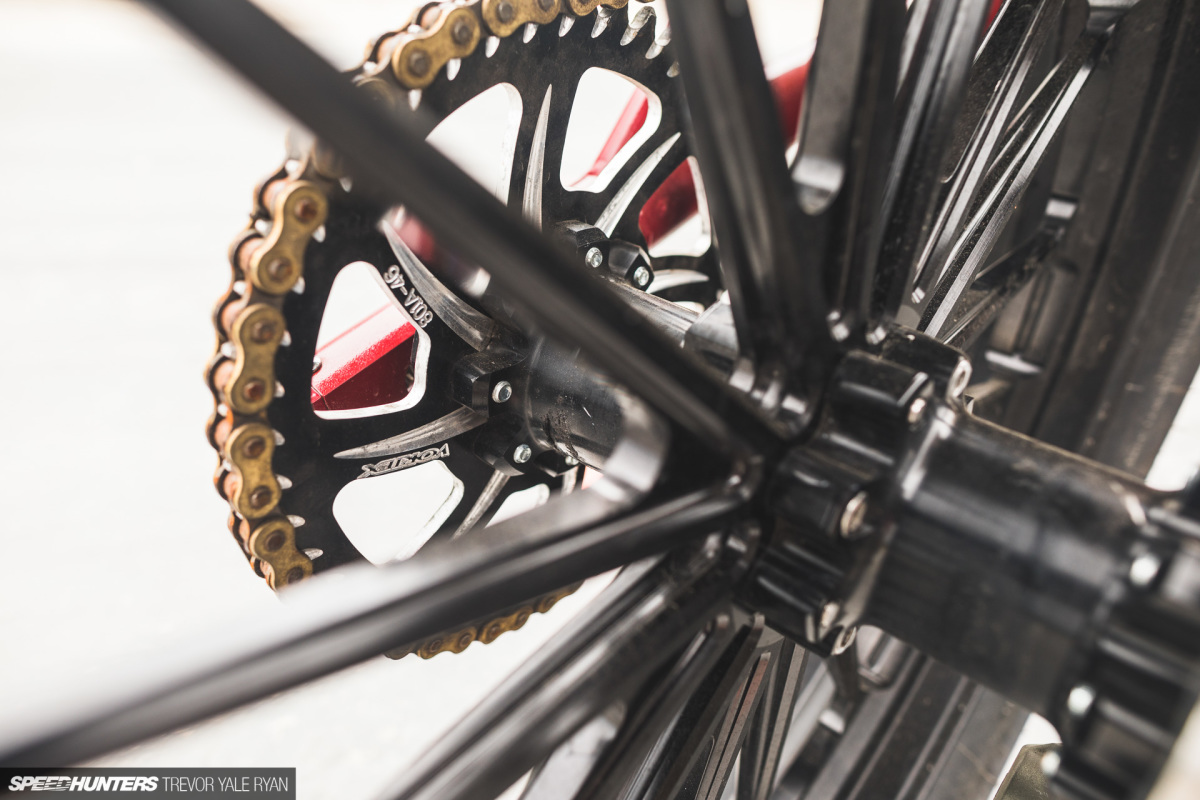
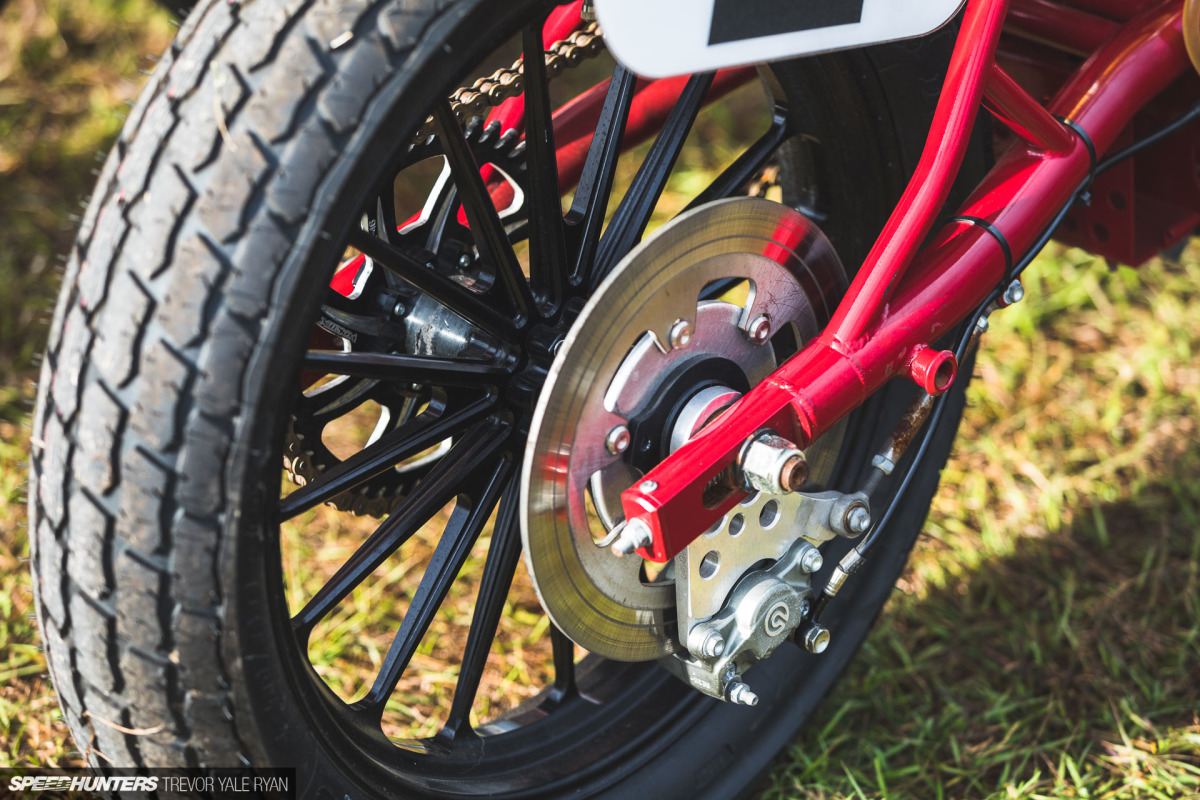
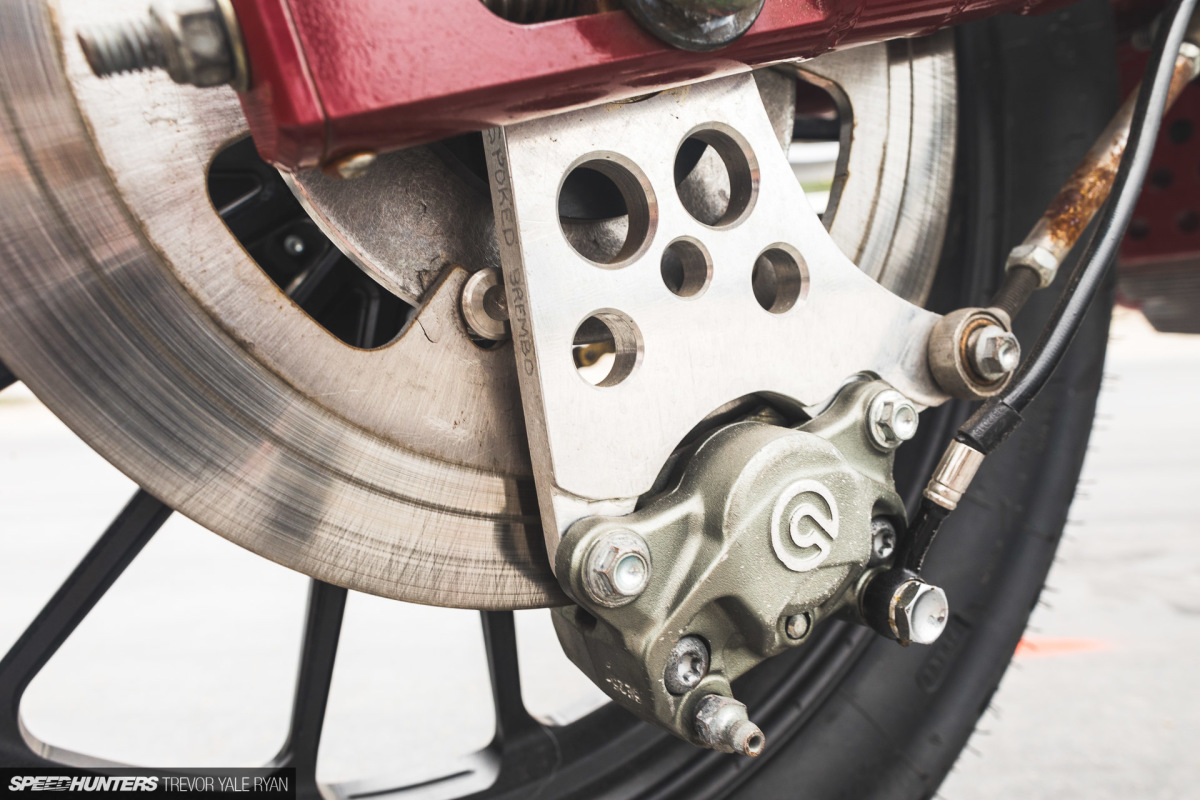
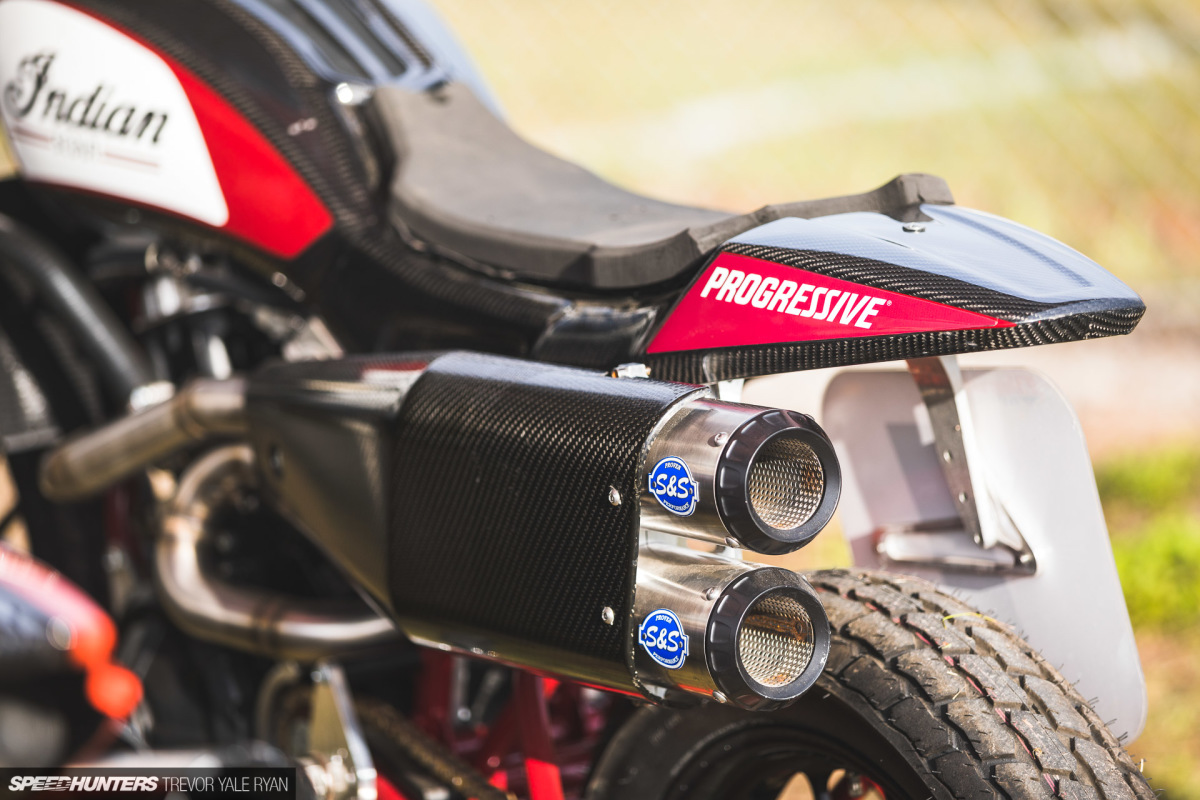
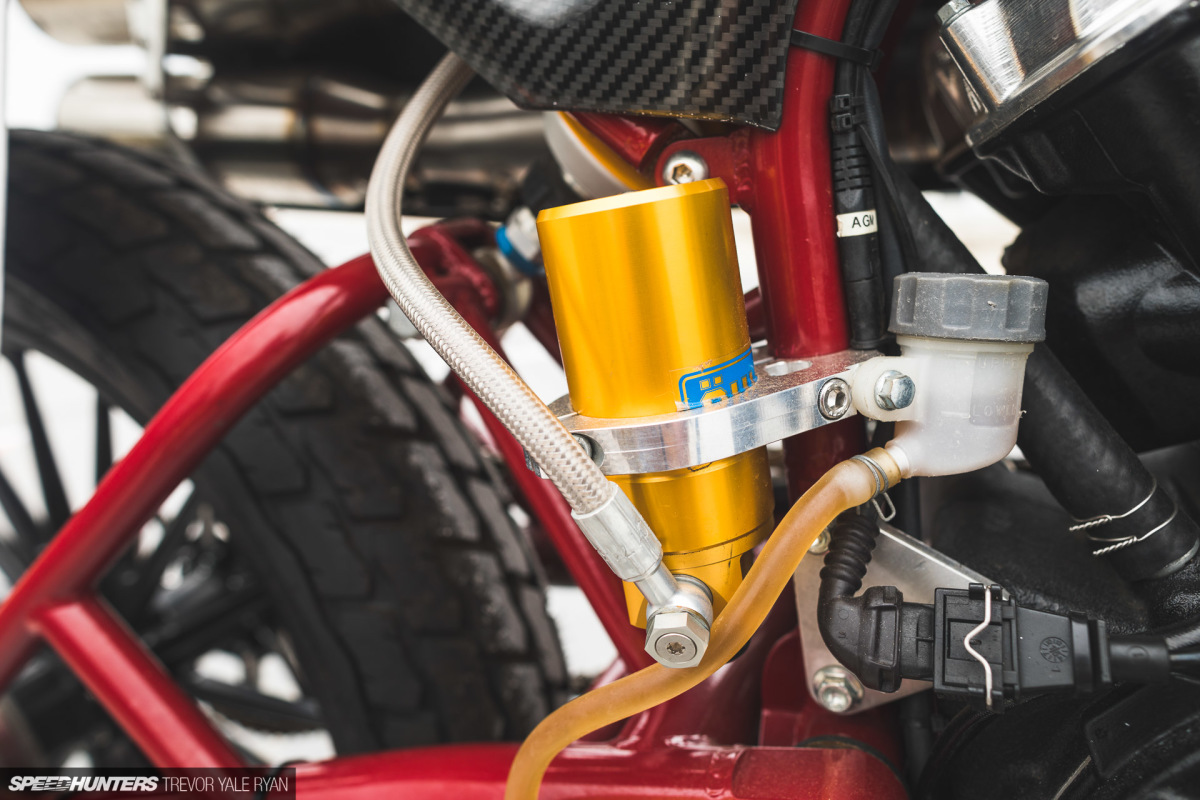
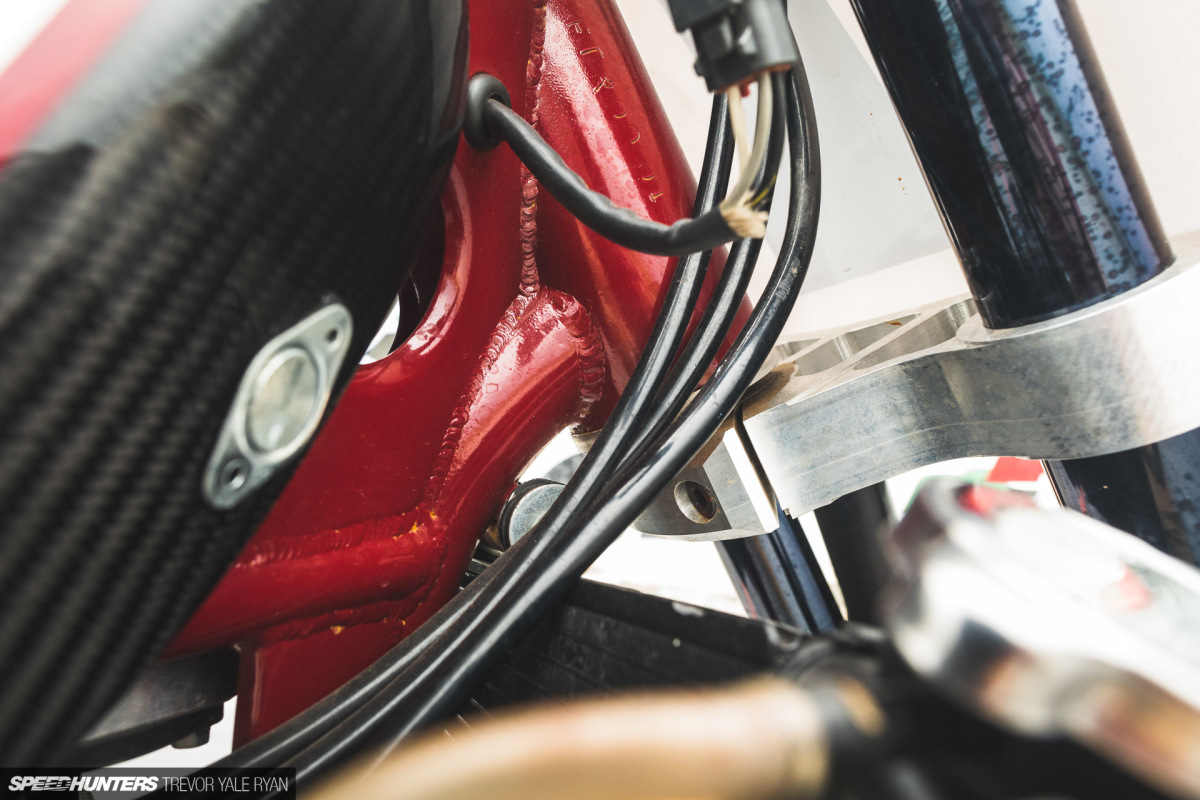

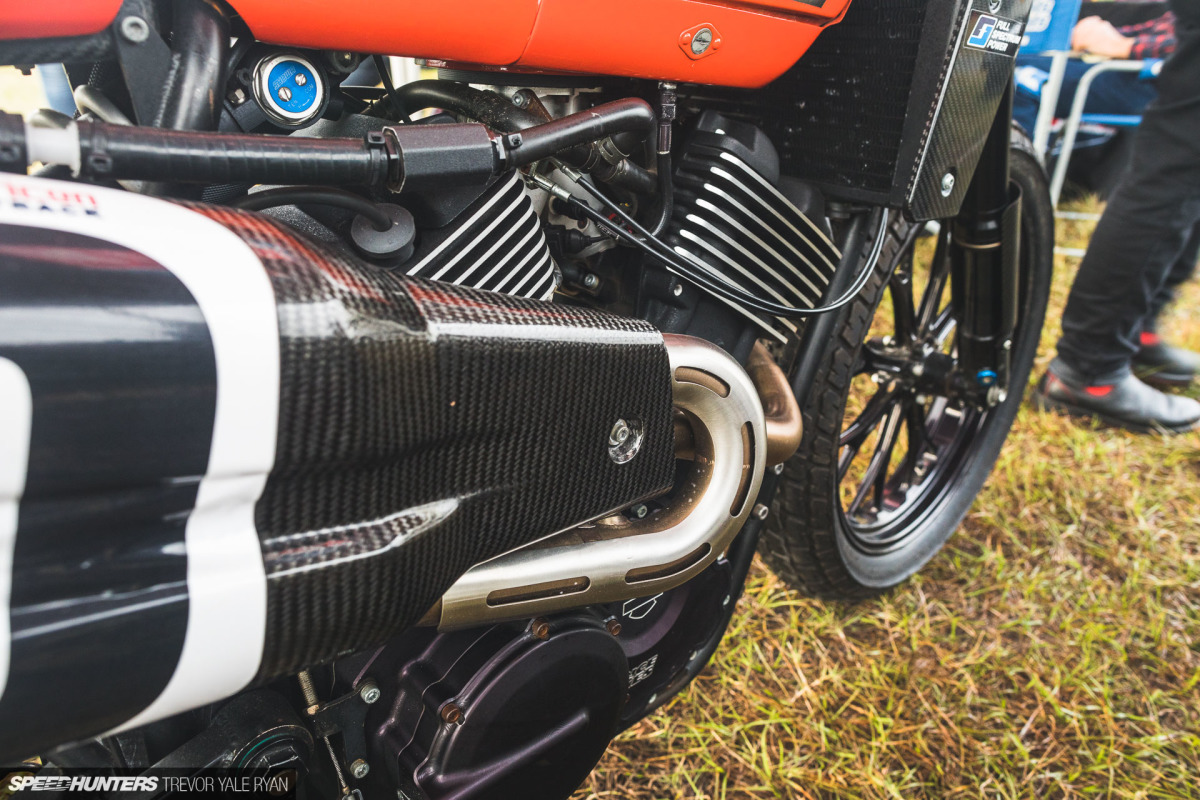
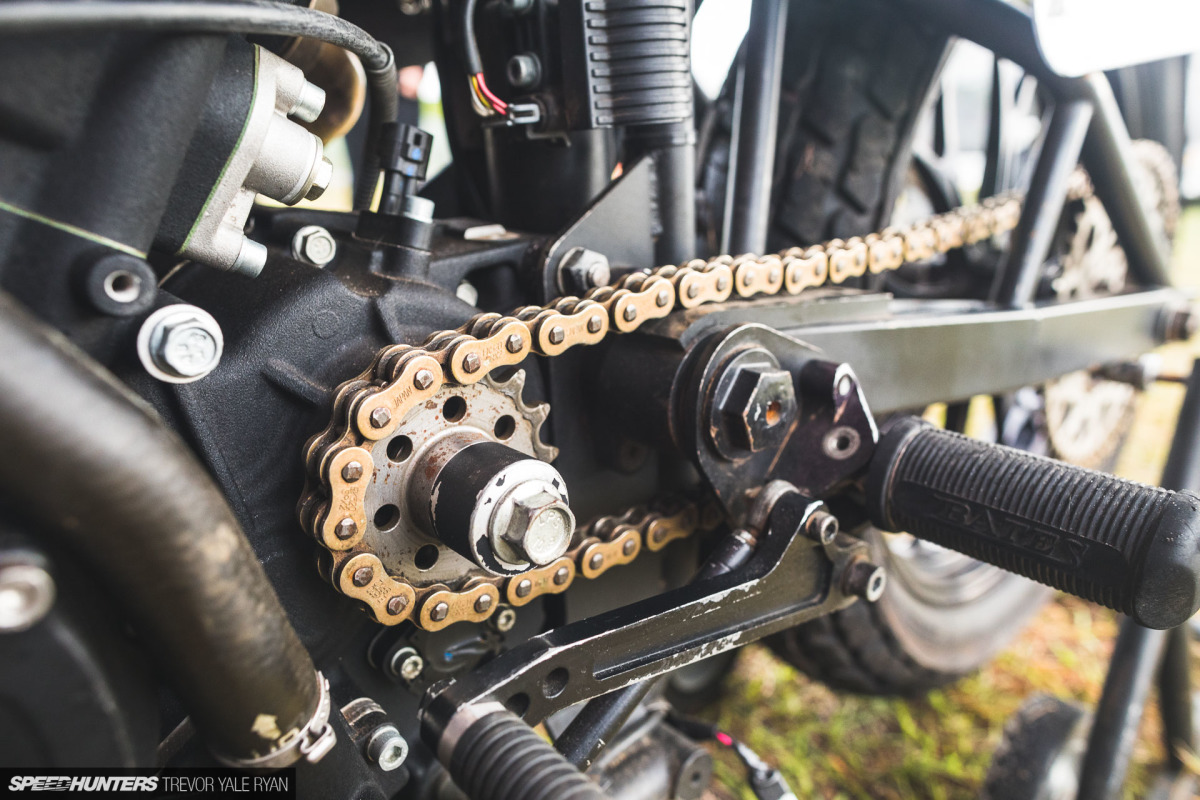

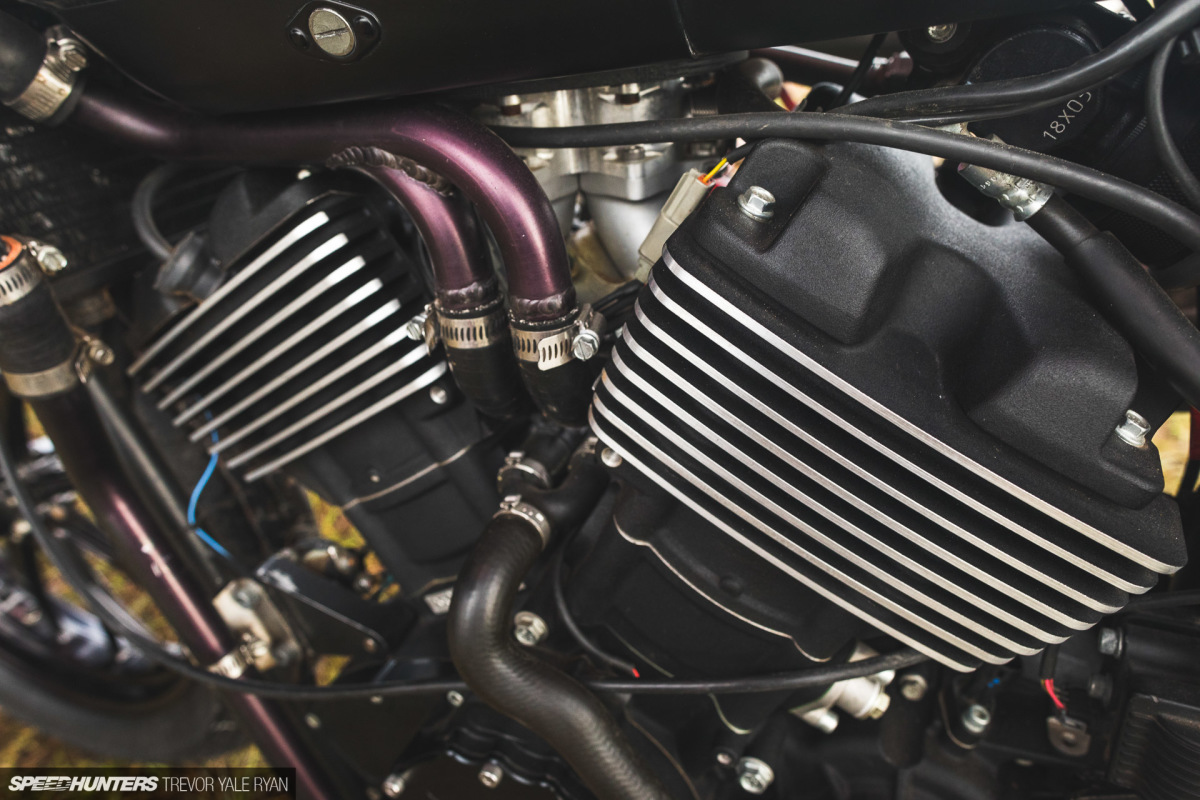
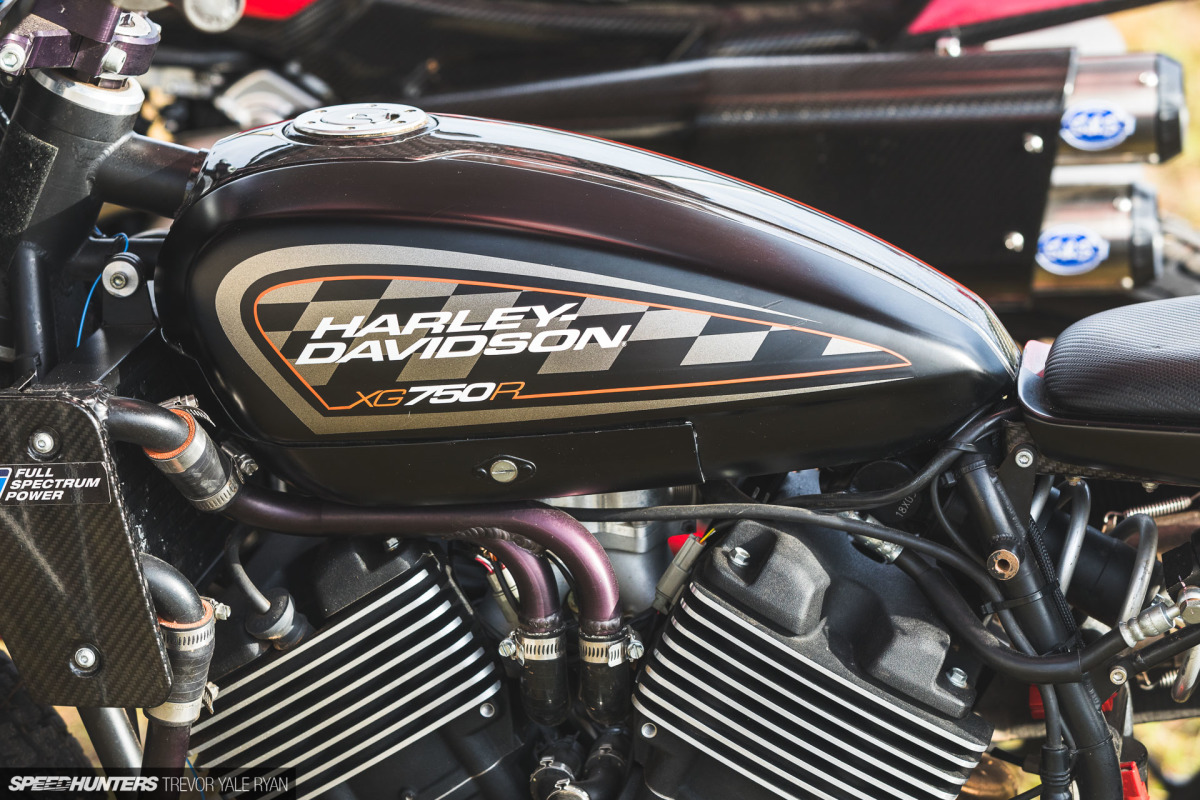
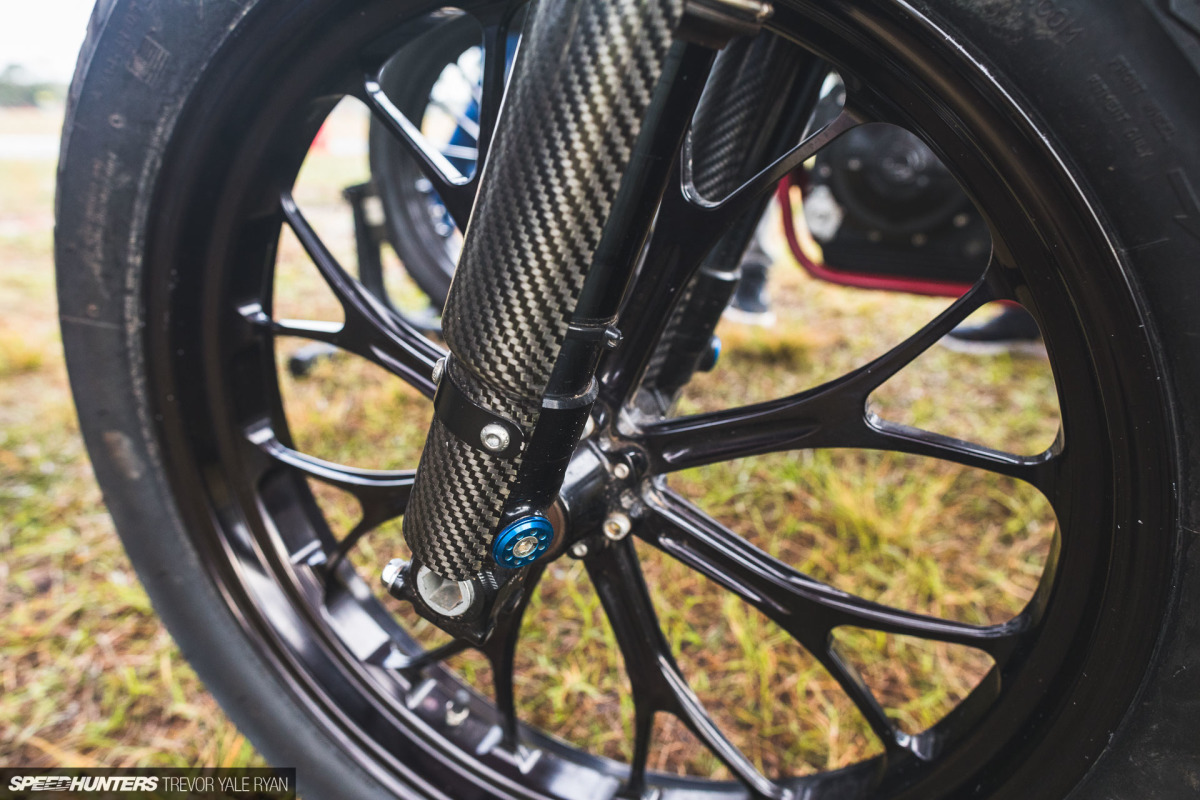
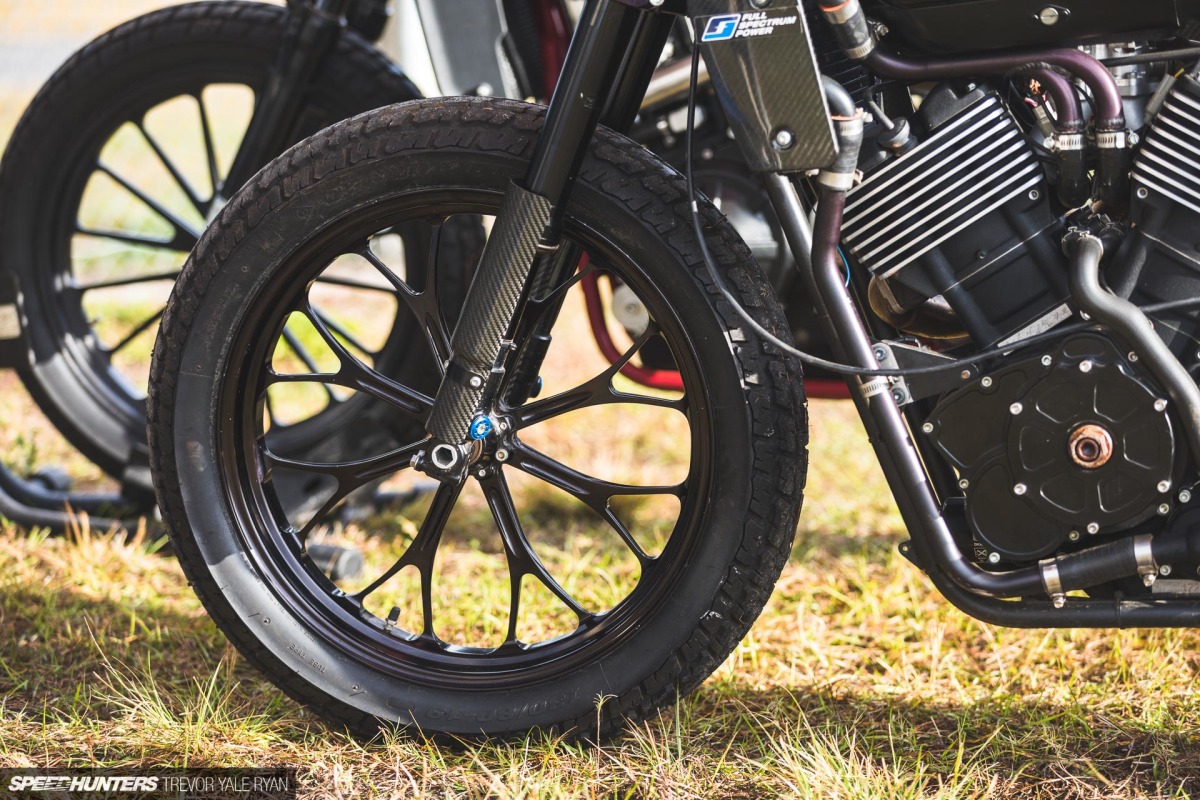
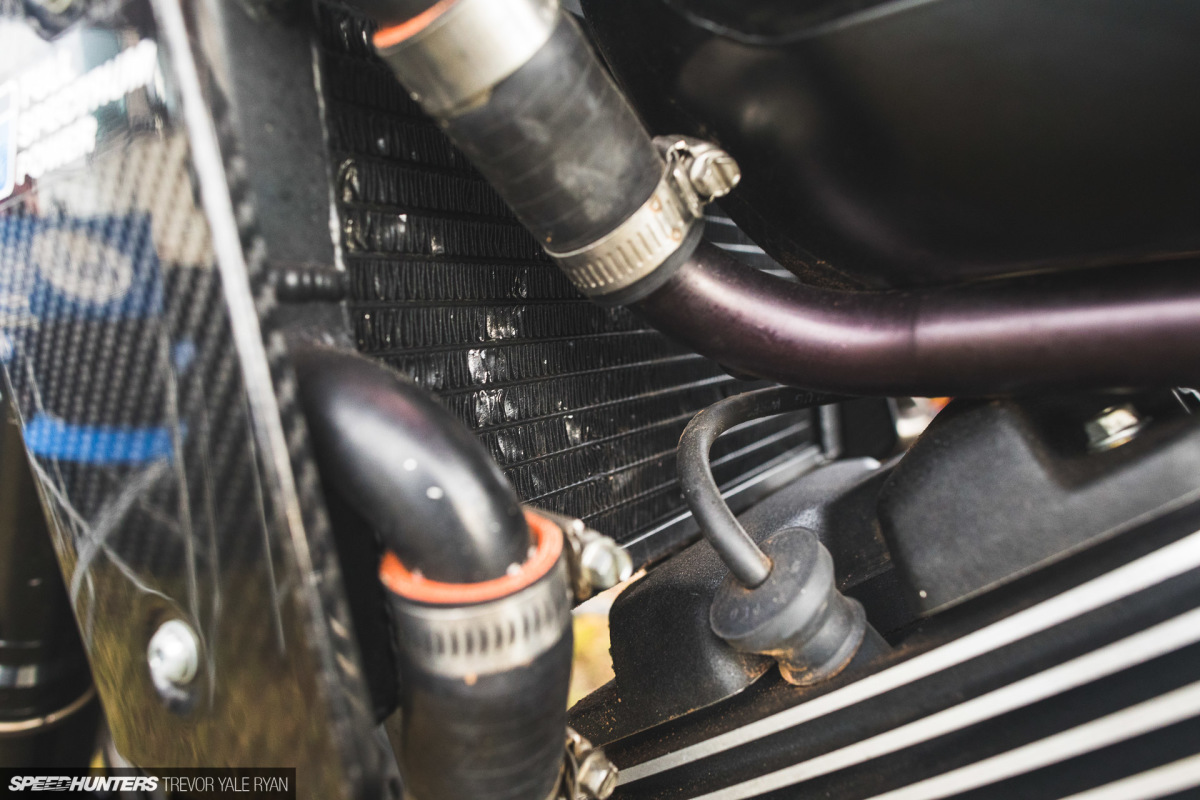
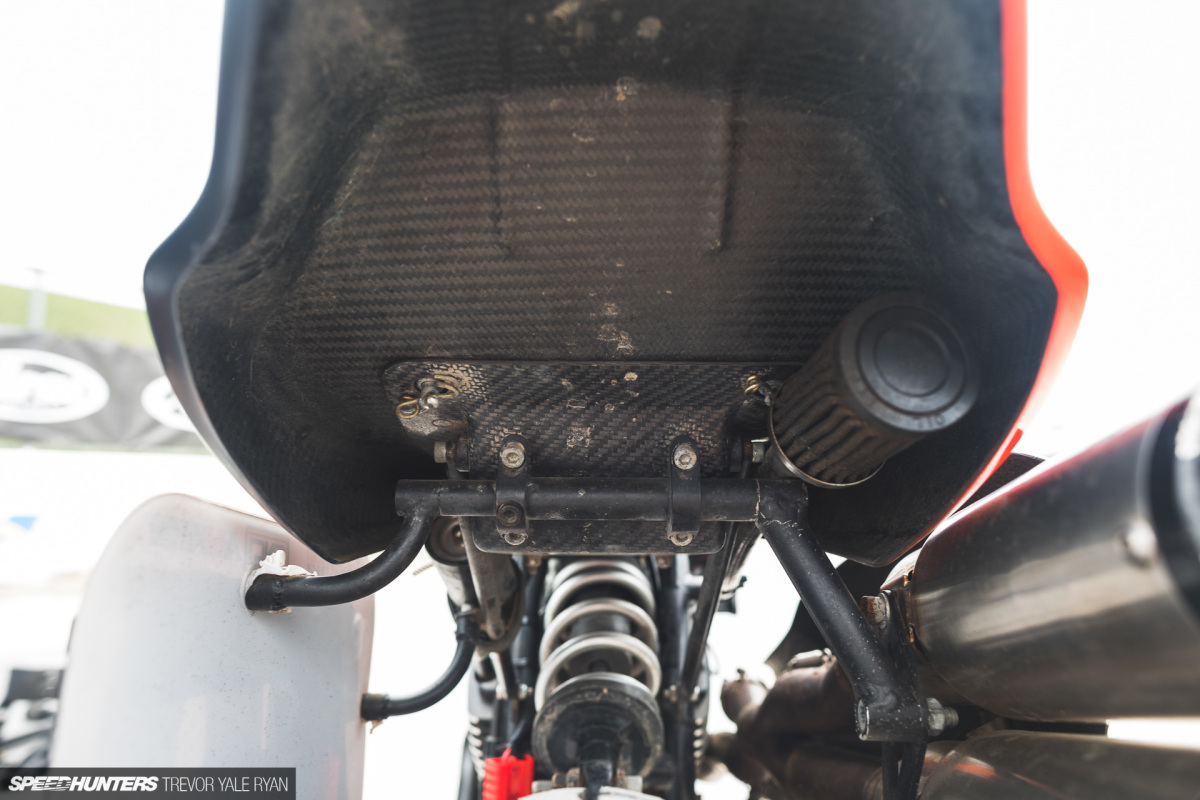
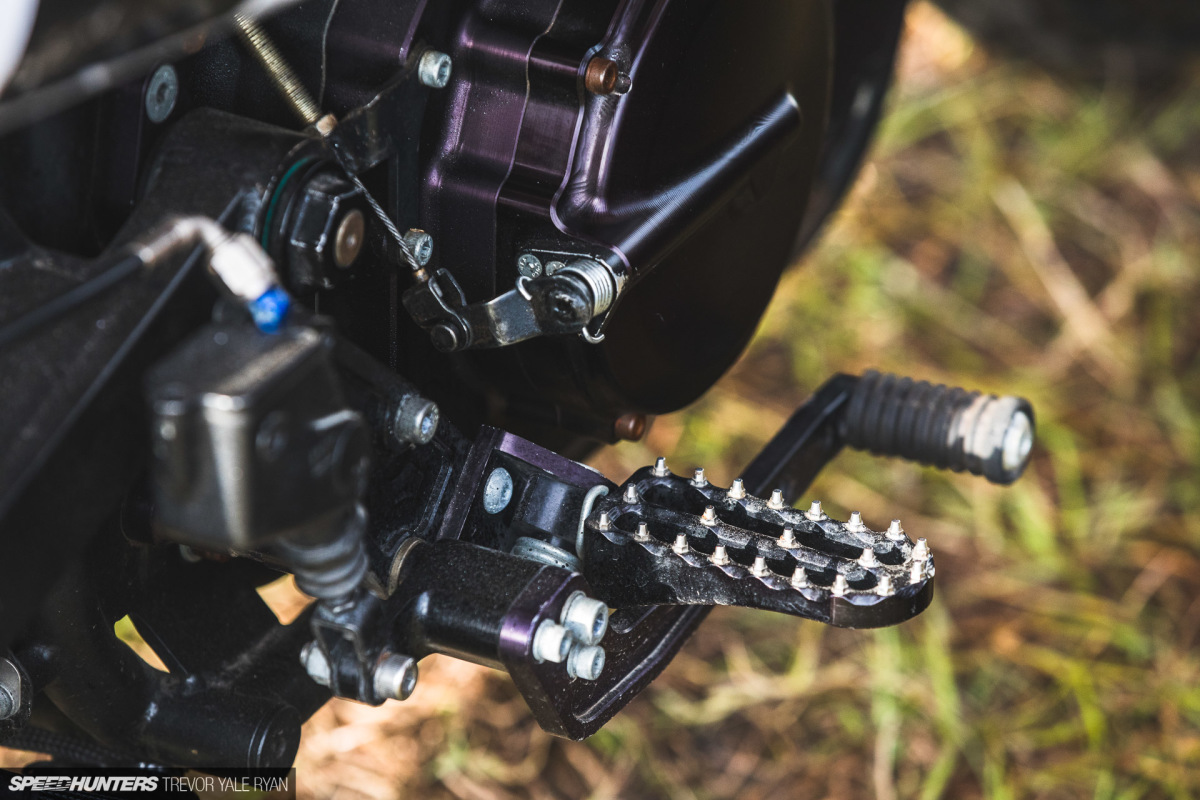
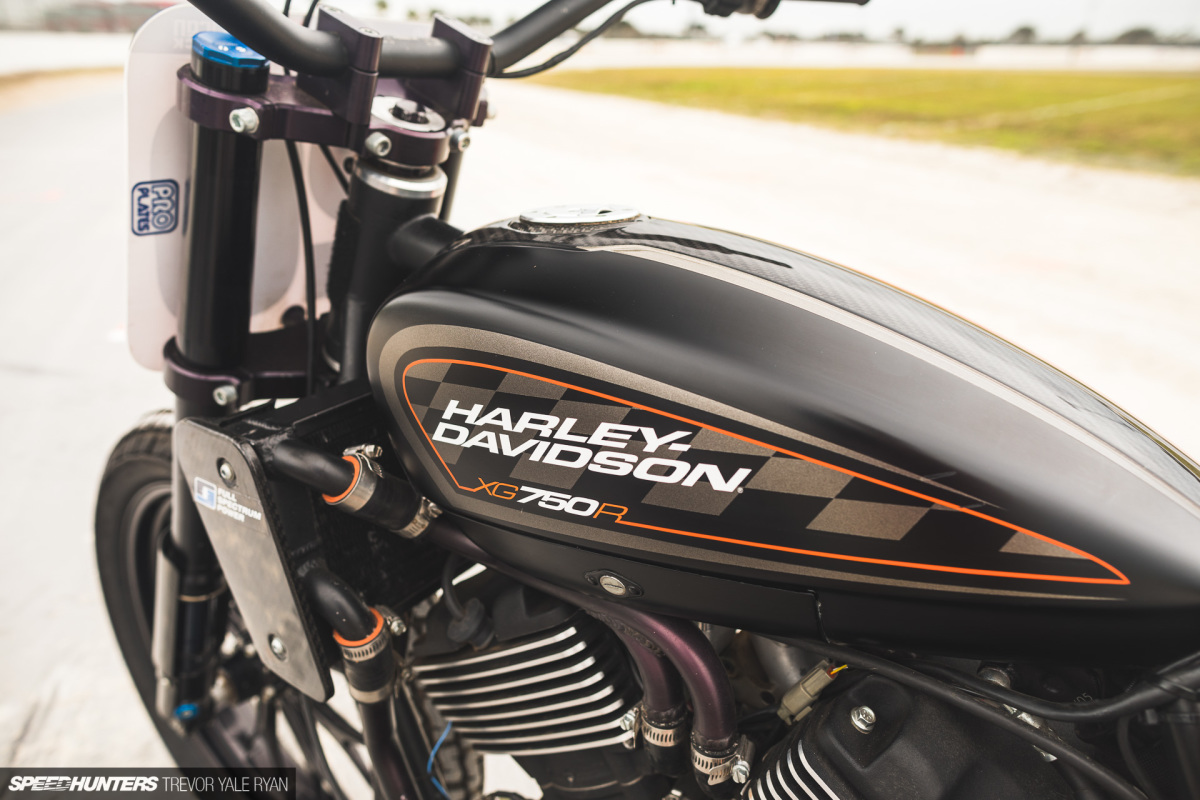
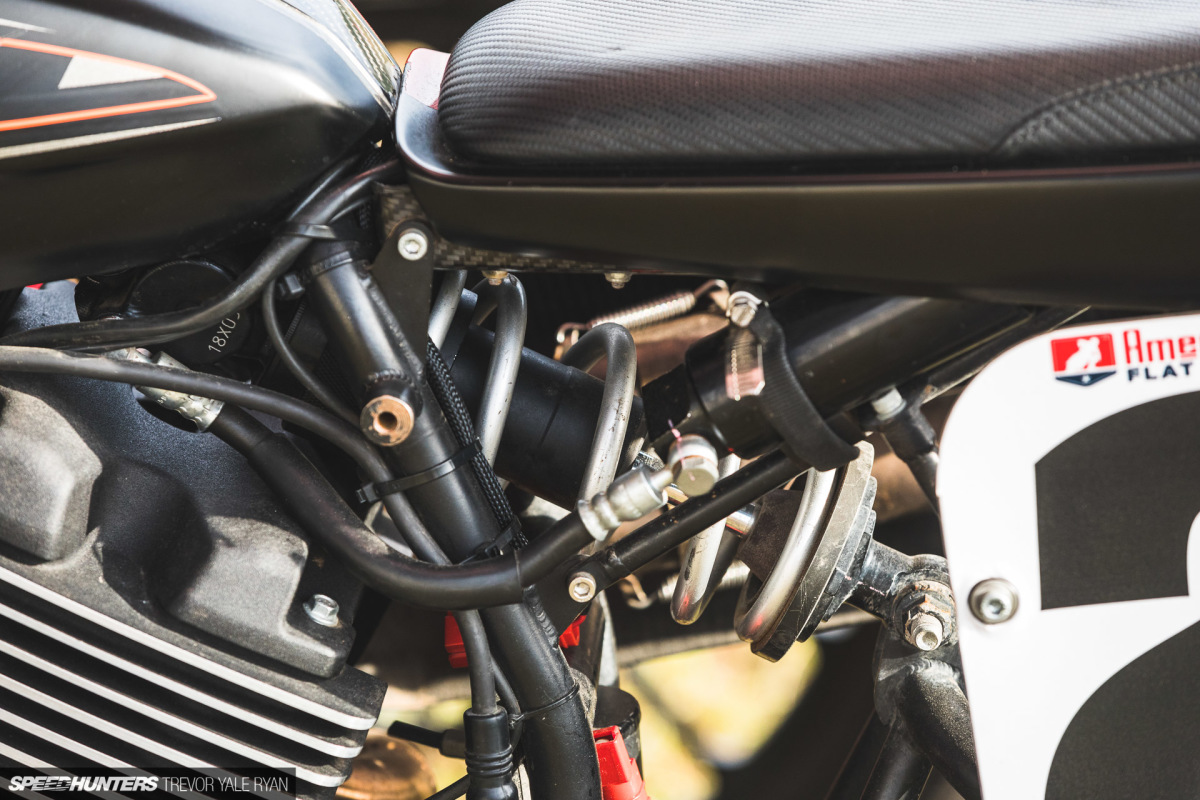
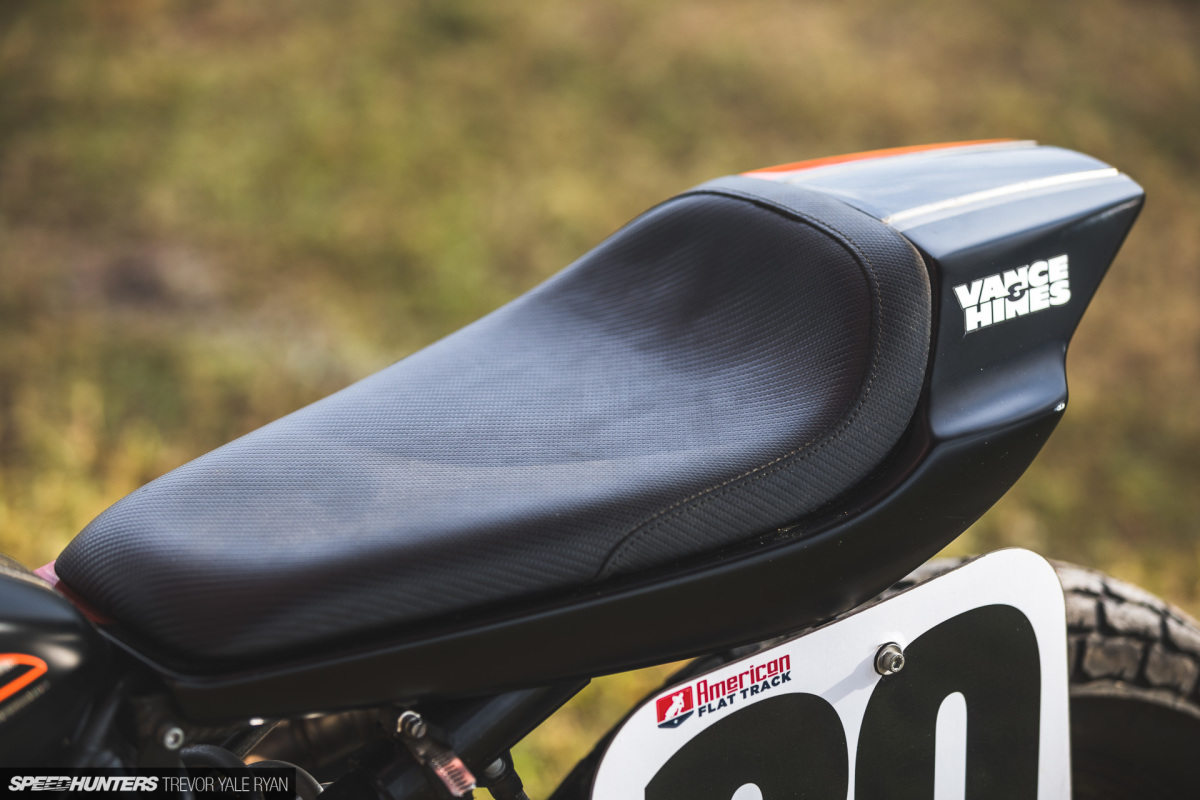





I really wish I could afford the race FTR750 bike for shits and giggles. $50k. This resurgence of flat track is neat! I started paying attention when I got my license 10 years ago and a older coworker of mine went on and on about doing it!
I would love to have a flat track racer
Those bikes are just so cool!
These are awesome - great article.
I currently own a 1199 Panigale and in two minds whether to chop it in and build one of these. The Ducati is way to serious for me, and roaring round the back roads on one of these appeals much more
In other words Trevor, you’ve just cost me a fortune!